Kooyong mum’s
sweet second book
BUD AND BUZZ

Gogglebox mum Izzy opens up
‘I DIDN’T COPE’
Tragedy sparks safety crusade
‘HOLD MY HAND’






Kooyong mum’s
sweet second book
BUD AND BUZZ

Gogglebox mum Izzy opens up
‘I DIDN’T COPE’
Tragedy sparks safety crusade
‘HOLD MY HAND’





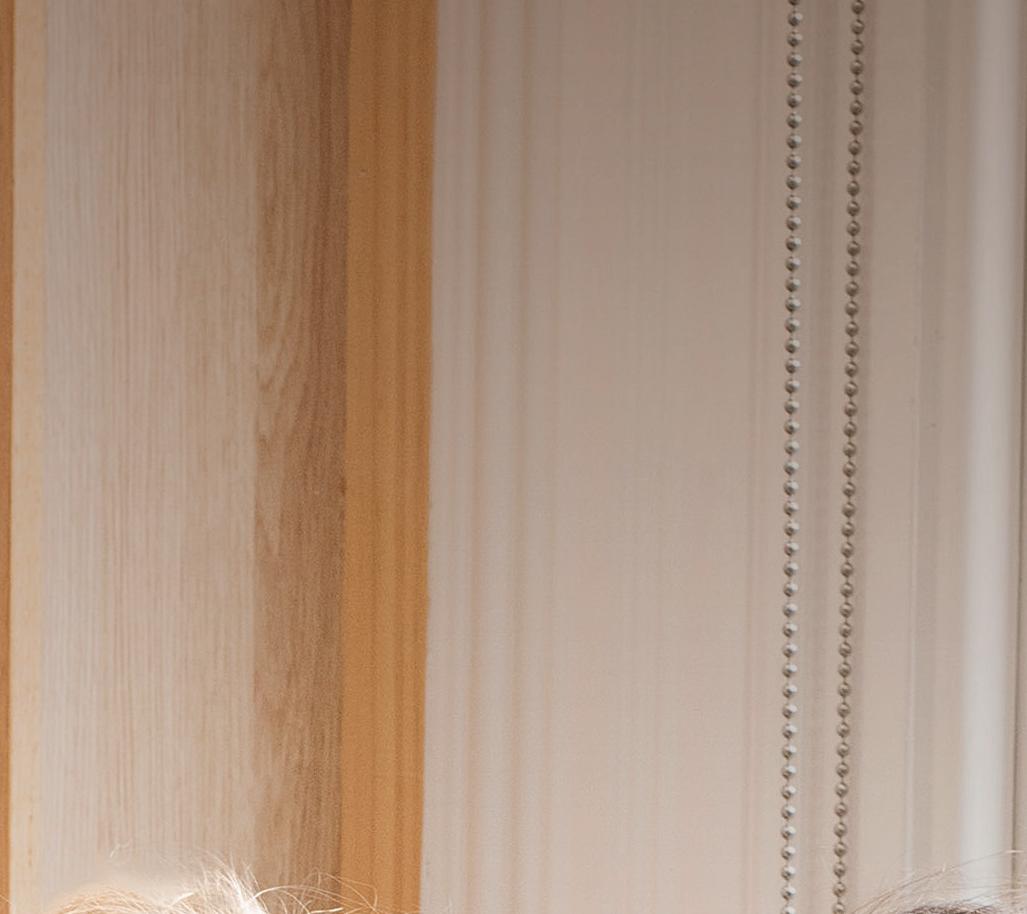



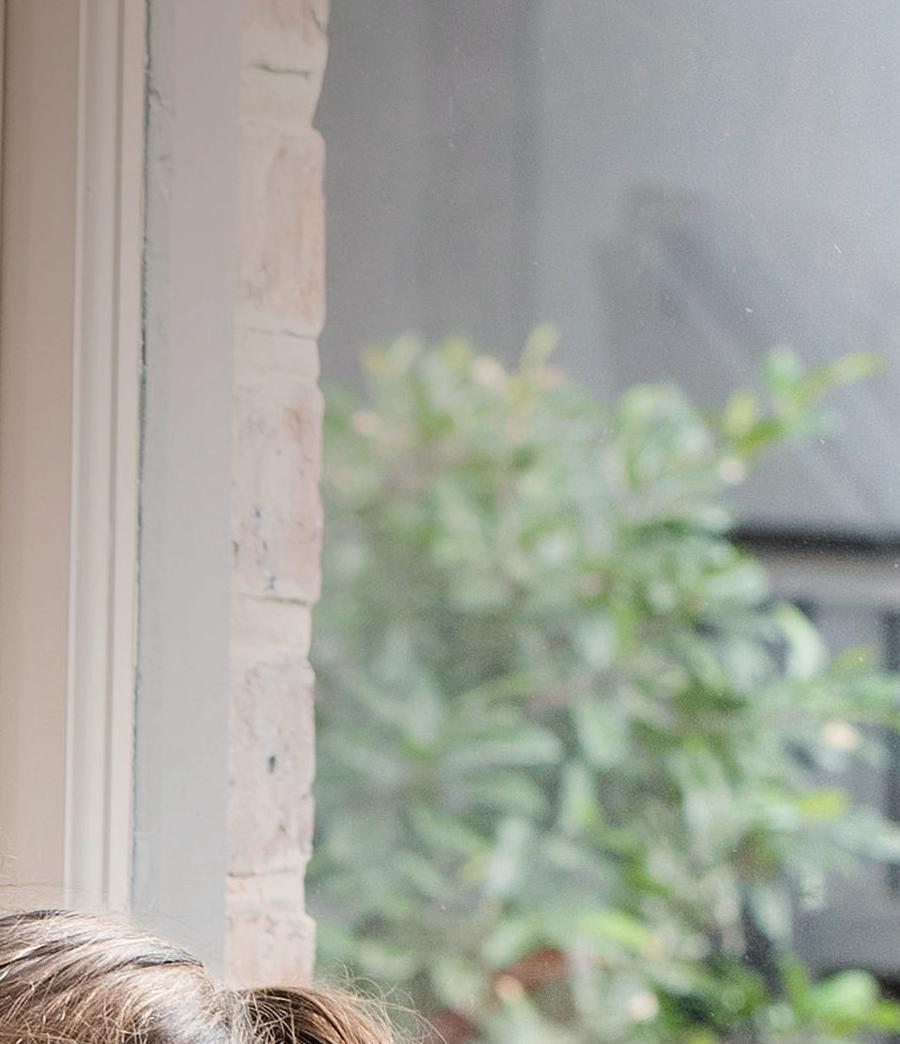



• 35% received ATARs over 90
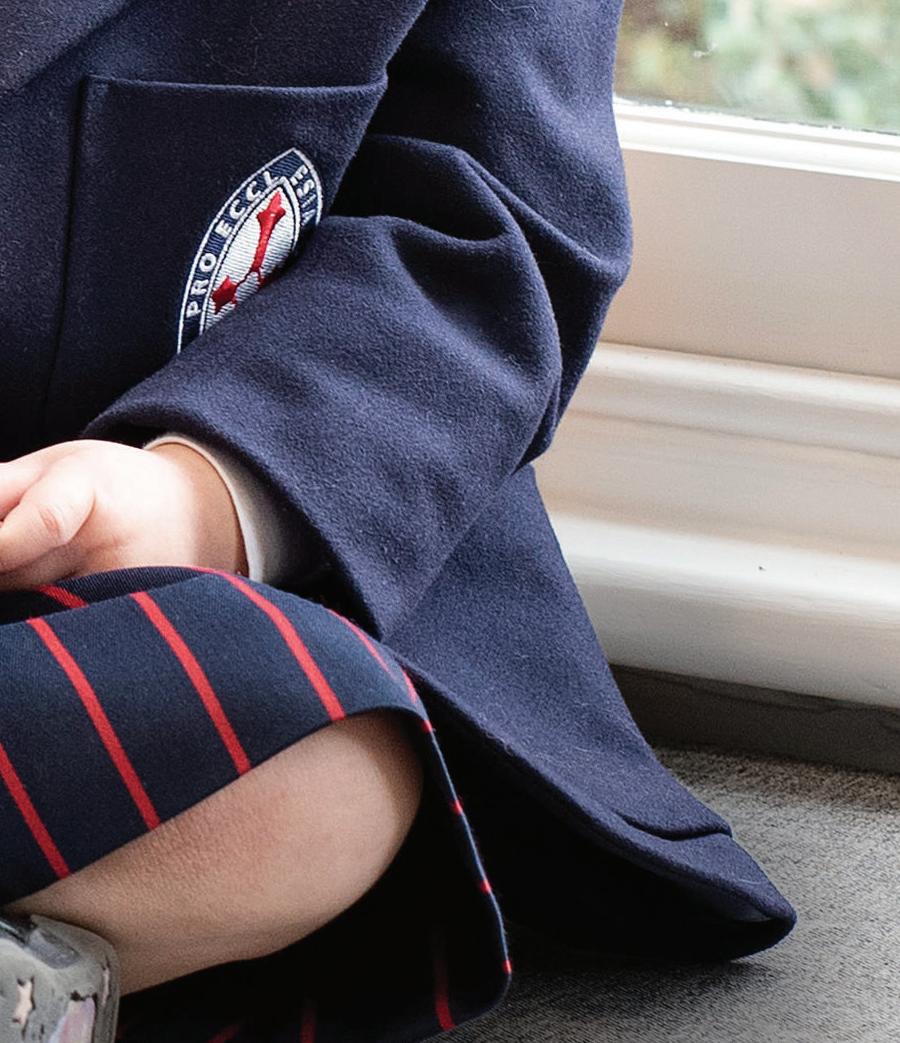
• 60% of students received ATARs over 80
• Top 1% rankings were achieved from Mathematics through to Literature, Music, Drama and Design.
The highest achievers joined St Michael’s in their Kindergarten or Primary Years. Our VCE Class


IT feels like this autumn has been a long time coming, at least in my household.
Between my daughter finishing kinder, umpteen Christmas celebrations, a family caravan getaway, my daughter starting Prep, work deadlines, and a late heatwave…this summer has dragged on for at least six months, surely?
I’ve been looking forward to a reprieve from the heat and some time to take a breath.
Autumn often feels like a reset for me. Life seems to slow down a little and nature welcomes visitors with open arms - cooler temperatures and stunning foliage bring me so much joy.
The Labour Day long weekend provides the opportunity for a little family getaway, and then there’s the

Steve Biddulph: When the child is not the problem
PAGE 4
school holidays - and Easter.
I think I’ll appreciate the Easter break more than usual this year.
It’s always a time to relax with family, bake hot cross buns, don matching bunny-print pyjamas (for as long as my daughter will indulge me!), and enjoy a chocolate egg or two.
But this year, I’m sure my five-yearold will also relish the downtime after launching headfirst into her primary schooling. And I’m looking forward to spending some quality time with her, making up for the hours we’ve been separated by the classroom. I won’t mind taking a break from lunchbox duty, either.
Finding the balance between keeping her entertained and active and allowing

Fall in love with your smile at Modern Orthodontics
PAGE 14
her time to rest is a challenge for me.
As will be fitting in every playdate she’s requested/planned with her friends! I’m going to have to work hard to keep the holidays from becoming just as busy as the school term.
How do you juggle school holiday R and R with activities and socialising?
We’d love to hear from you!
We’d also love to hear about your Easter traditions. Email casey.neill@ starnewsgroup.com.au or find us on Facebook or Instagram.

Stonnington Boroondara Kids magazine is a Star News Group publication.
Stonnington Boroondara Kids will be published quarterly prior to each of the school holidays.
Stonnington Boroondara Kids Cnr Princes Hwy and Army Road, Pakenham, 3810 PO Box 9, Pakenham, Victoria 3810 Phone: 5945 0666 Fax: 5945 0777
Editorial Casey Neill casey.neill@starnewsgroup.com.au
Photography Rob Carew

Sleep easy with party packages from Slumber Tribe
PAGE 23

Group Advertising Sales Manager Mandy Clark mandy.clark@starnewsgroup.com.au Phone: 5945 0608
by

Get the buzz on Kooyong mum Penny O’Loughlin’s new book
PAGE 5
Kidsafe tackles low-speed runover deaths, injuries
Make it: Crafty fidget toy fun
PAGE 6


Boy’s tragic death sparks mum’s traffic safety crusade
PAGE 7
Kids in the Kitchen: Gluten-free pizza scrolls
PAGE 8
Gogglebox’s Isabelle Silbery on struggling through her second pregnancy
PAGE 9
Nurturing faith and learning: St Roch’s Catholic Primary School
PAGE 15
Asthma Action Plan a school essential Online banking safety lessons
PAGE 16


Andale School: Applying science to learning
PAGE 17
Supporting students to understand pelvic pain
PAGE 18
Dolly’s Dream: Encouraging kids to be kind
Genetic testing gifts Rachel and Blake their Grace PAGES 24-25
Introducing the ‘funcle’ Latest book releases for all ages



PAGE 26



Nanny Piggins’ return a homecoming for author RA Spratt
PAGE 10
A Mindful Moment: Making mindfulness fun
Mini Maestros: Building social skills in early childhood through shared music
PAGE 11


Play, learn and connect at Bright Little Sparks
PAGE 19
Recruiting new MCC junior hockey players
Dance Factory: Learning through performance
PAGE 21
Expanded newborn screening
Ready Steady Go Kids: Empowering young athletes and scholars
PAGE 12
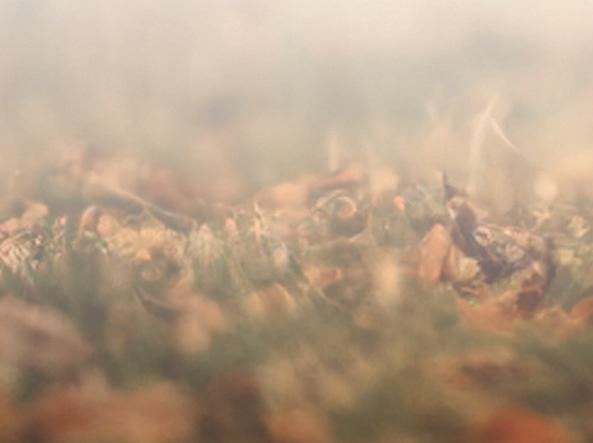

How our community can help new parents with disability thrive
PAGE 13

The birthday trend getting high fives all round
PAGE 22
The ultimate party experience with Fizz Kidz
PAGE 22


Classic games to get the party started
PAGE 23


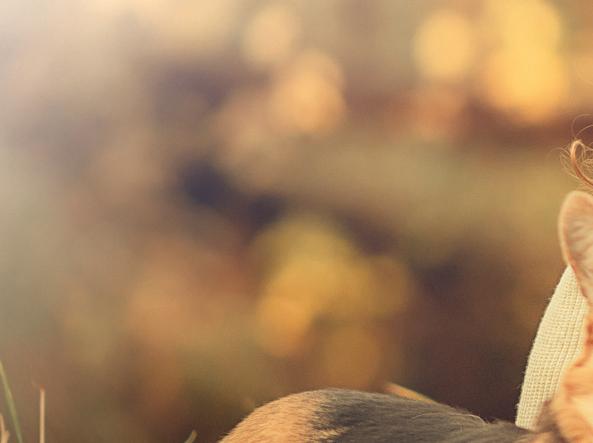
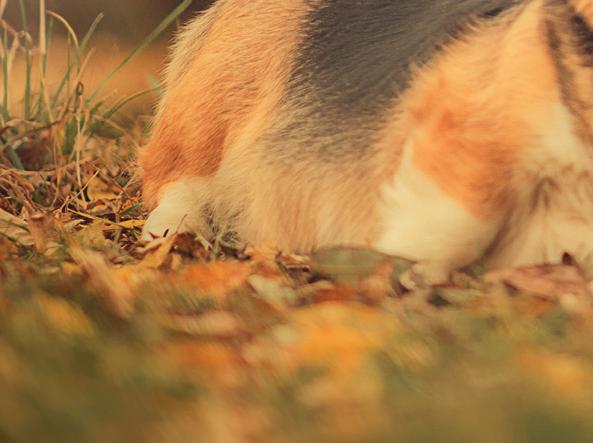



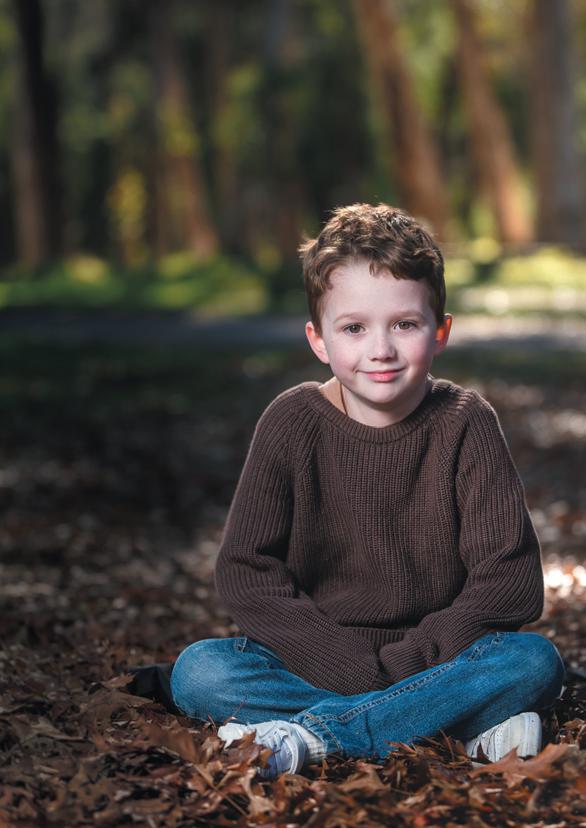


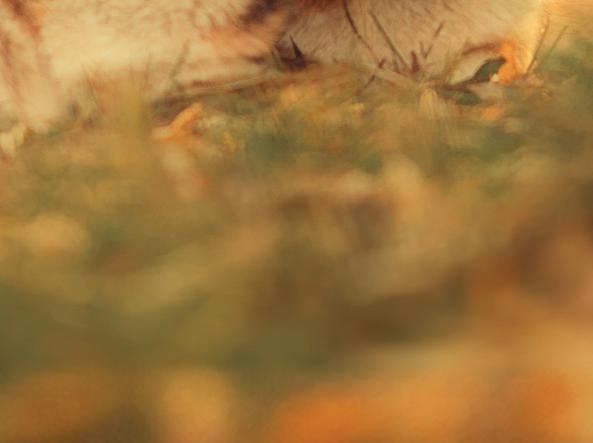



Often it’s easiest to blame a child when in fact it’s us who are the problem!
But there is a blame-free way to get through this, writes STEVE BIDDULPH
DESI is six. He has been seen by many specialists - paediatrician, art therapist, play therapist, psychologist.
The reason driving his parents to all this effort and cost is that he has ‘anger issues’.
In plain language, flying off the handle, hitting or shouting or storming off when he gets stressed.
And Desi seems to be stressed nearly all the time.
But an important diagnostic clue is that at school he is mostly fine. So this was not likely to be a brain condition like ADHD - it was ‘situational’. It only happened at home.
So what might be wrong with him? Do we need to look a bit wider?
Forty-five years ago I got my first real psychology job. It was in a new clinic being set up by psychiatrist Colin McKenzie, who had a radical idea.
We would always and only see children along with their family. This idea set off explosions among referring doctors and parents.
Why could we not just see the child?
Dad wouldn’t want to come in, he saw it as his wife’s problem. Mum was too busy with other kids. And what did they have to do with it anyway?
In fact, our clinic was soon filled with families as word spread, in our small working-class town of Launceston, that this approach seemed to really help.
With the whole family in the room, nine times out of ten we could get to the root of what was going on from the very first session.
And there were actually solutions, once you sat down in a safe space and had time to really talk.
Kids do not have problems in isolation. And very often a child’s problems are just signs of things going wrong for the adults too.
A dad who is impossible to live with, angry or insecure, always making things worse.
A mum who is drowning in stress. Other children in the family bullying each other or having anxiety issues of their own.
Families are great places when they are loving, but when they implode they can be hell on wheels.
Launceston was a struggle town back then. Low income, uneducated families are often smart and resilient when they are given some respect, a voice, and some good information.
Over and again we found that by carefully unpacking exactly how things went astray, we could help a family find out how to be happy again.
Family therapy is based on a single life-changing principle: NO BLAME.
Everyone in the family can help by changing some of their own actions or words. And small changes can lead to huge ones down the track.
Eventually, I came to focus on fathers because men were struggling the most. Many wanted to be a good dad above all else but had never seen a good dad in their lifetime.
I wrote Manhood, and then Raising Boys, because I felt we had to build a more loving and open-hearted kind of masculinity from the ruins of the industrial war-torn twentieth century.

MORE than 70 lakes across Victoria are stocked with rainbow trout, ready for families to enjoy the great outdoors.
The State Government released 35,000 rainbow trout into lakes across the state in September last year.
“We know parents are always looking for fun, low-cost activities that get kids outside and into nature – so we’re providing great fishing opportunities for families,”
Outdoor Recreation Minister Steve Dimopoulos said.
Many of the freshly-stocked lakes have fishing platforms, walking tracks, barbecues, and playgrounds, ready for a fun and easy day out for the whole family.
Families can join the fun at lakes across Melbourne and in regional areas.
Rainbow trout are the perfect catch for beginners because they can easily be caught using widely available bait.
“These catchable size rainbow trout for kids are part of our record-breaking stocking program, which released more than 11.5 million fish, more than all other states and territories combined,” Victorian Fisheries Authority CEO Travis Dowling said.
So many men were traumatised and the dads of the past had often been violent, or critical and harsh, or distant and buried in work. Or had walked out on their families.
Men needed help and healing to become something different
Organizations like the Fathering Project sprang up and started dads groups in hundreds of schools, and resources and help for dads anywhere to link up and learn the craft of being a loving dad.
When Desi’s parents finally agreed to see a family therapist, their little boy’s anger issues were no mystery at all.
His dad was explosive whenever Desi was difficult, and the two detonated each other many times a day.
Desi’s dad had a terrible childhood and when he was helped, individually, to talk about and get past that, he was much easier to be around, and much happier too.
And Desi really improved as well.
Steve Biddulph’s new book on healing anxiety is called Wild Creature Mind. Published by Pan Macmillan.
The Fathering Project is at fatheringproject.org.
The State Government provided Little Angler Kits to school students across Victoria, including a rod and guide to fishing with advice on how to catch a rainbow trout, what bait to use, and more handy hints for reeling in a catch.
To view the full list of lakes and see what’s been stocked at your local fishing spot, head to vfa.vic.gov.au/ holidaytrout.
More information about fishing can be found in the Victorian Recreational Fishing Guide, which is available free at most bait and tackle shops, online at vfa.vic.gov.au/fishingguide, or via the free Vic Fishing app.
By Casey Neill
A Kooyong mum’s new book started as a primary school writing project.
Penny O’Loughlin launched Bud and Buzz at Readings Hawthorn in February.
“Its origins are just around the corner,” she told the packed store.

“When I was in Year 2 at St Joseph’s I wrote a story called The Rose and it was published in the parish bulletin.
“That story has evolved into Bud and Buzz.
“So keep reading and writing those stories because you never know where they’ll end up.”
Bud and Buzz, illustrated by Laura Cortinovis, follows a bashful flower named Bud, who discovers the beauty of nature and the importance of resilience through an unexpected friendship with Buzz the bee.
Bud weathers the storm before it’s his time to shine.
Penny wanted to encourage children to appreciate the beauty around them and learn about pollination.
Her background is architecture and landscape architecture, and she’s worked as a landscape designer for years.
“I learn a lot from plants and nature,” she said.
She shared seeds with the dozens of people who attended the launch - “to bring Buds and bees to their own gardens” - as well as honey lollipops and honey-based Anzac biscuits baked by her mum.
Penny thanked husband Brad, eldest son Fletcher, and youngest son Harry.
“Our Bud. This book is for you,” she said.
She wrote her first book, the selfpublished Winding Down, for Fletcher.
“He is an extremely bright and passionate boy who sees the world with very different eyes,” she said.
“This energy and brightness were and still are very hard to wind down at the end of the day.”
Penny tried audiobooks, essential oils, meditations, music, relaxation sounds, teas, warm baths, candles, weighted blankets, massage, and more.
When she couldn’t find the right book to support both her and Fletcher through their bedtime battles, Penny wrote it.

“My favourite thing to do in my life is to go to a book store and read the children’s books,” she said at the Bud and Buzz lauch.
So she’d pursued her passion and taken a children’s book author course while pregnant with Harry.

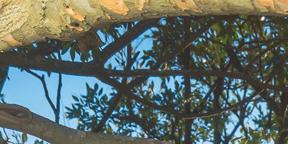




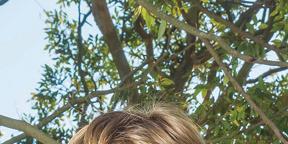
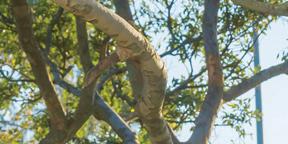


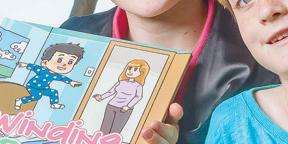

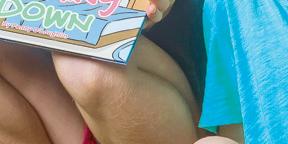








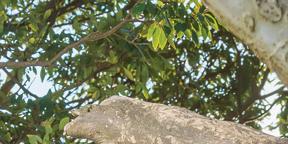

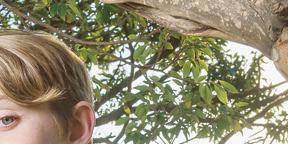


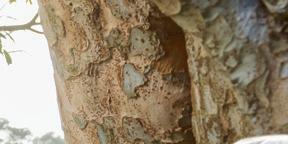





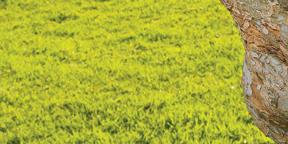






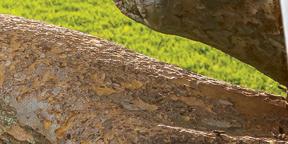


“I love the simple tales and parables that can explain complex topics simply and with comedy,” she said. Winding Down is “rhythmic, almost like a meditation”.
“As it’s read, it calms the reader too,” she said.
“We overschedule ourselves, with the rapid pace of the world.
“It’s about taking a moment to pause and just be.”
A publisher picked up Penny for Bud and Buzz, inspired by her experience parenting Harry.
“I felt like I needed to do this for him,” she said.
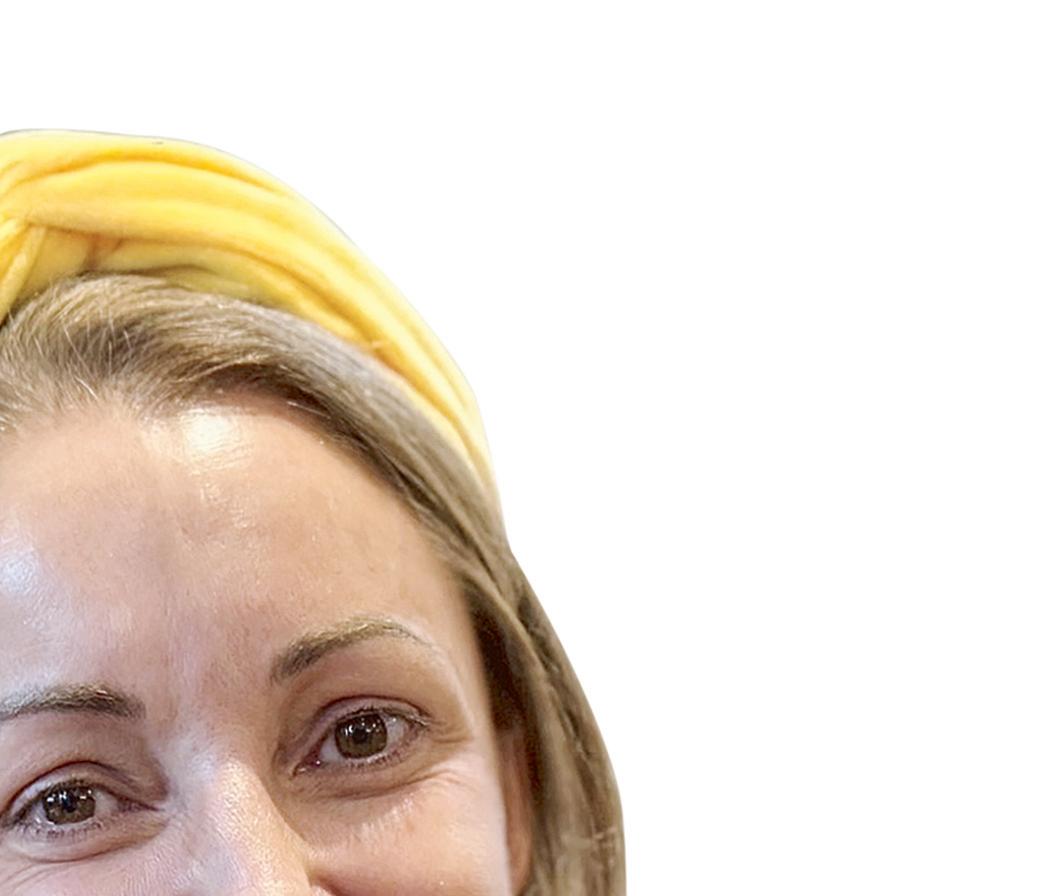


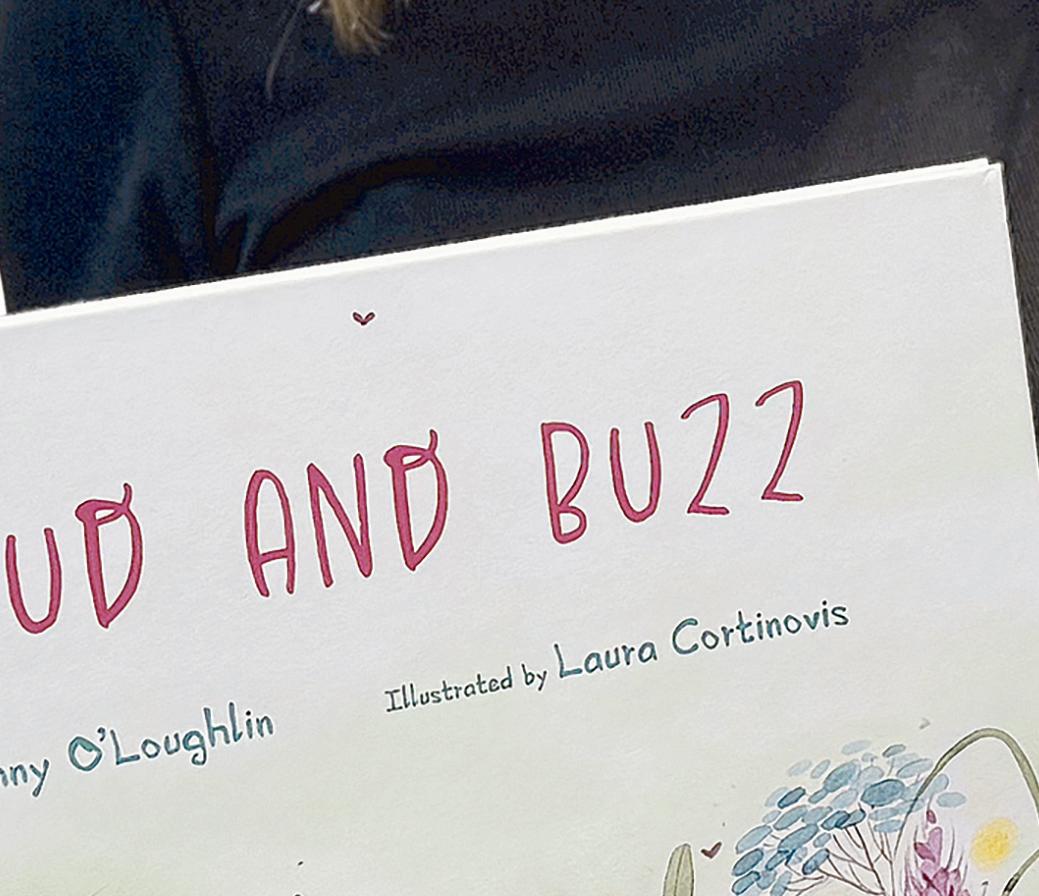
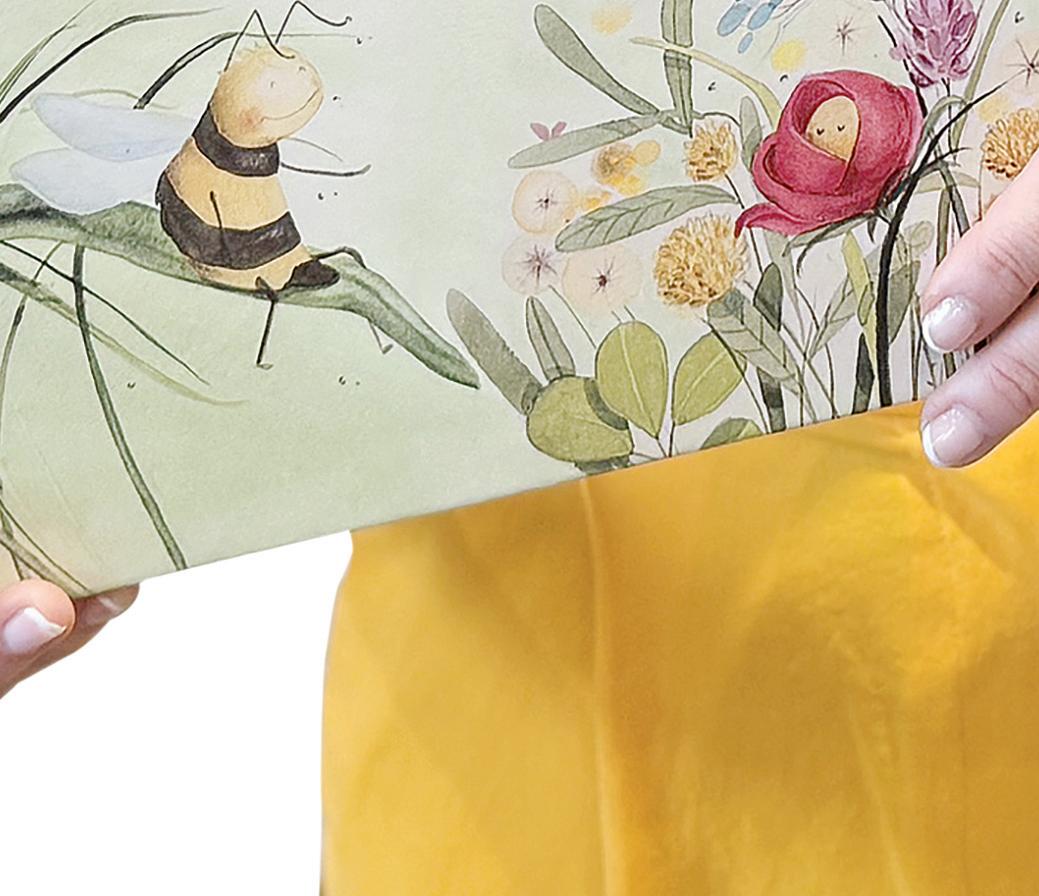



MORE than 40 children are killed or injured in low-speed vehicle runover incidents in Victoria each year, on average.
Kidsafe Victoria says while hospitalisation rates have decreased over the past decade, the number of fatalities has not, highlighting a spike of six deaths in 2023.
Between 2012 and 2023, children aged one to five was the age group most commonly involved.
The vehicle was moving forward in 72 percent of incidents, which was very different to previous data, which highlighted reversing vehicles as the main culprit.
Most incidents happened when the driver was returning home, leaving home, or repositioning the vehicle.
“Behind every statistic is a family whose lives have been irreparably damaged by the trauma and lifelong grief for their child,” Kidsafe Victoria CEO Sarah Sexton said.
“These are more than just numbers -
they are tragedies that ripple through families and communities.”
So Kidsafe Victoria, with support from the Transport Accident Commission (TAC) and in collaboration with key stakeholders, developed the Low Speed Vehicle Runover Prevention Strategy.
“The strategy identifies the critical factors contributing to these tragedies, such as vehicle design, human factors, and property design,” Ms Sexton said.
“It also sets a framework for action through education, technology initiatives and advocacy.”
Key focus areas include:
■ Promoting safer vehicle design and developing life-saving technologies to be retrofitted to older vehicles;
■ Enhancing driveway layouts to reduce hazards; and
■ Raising awareness about supervision, blind spots, and safe driveway practices.
“We need collective action to prevent these avoidable incidents,” Ms Sexton said.
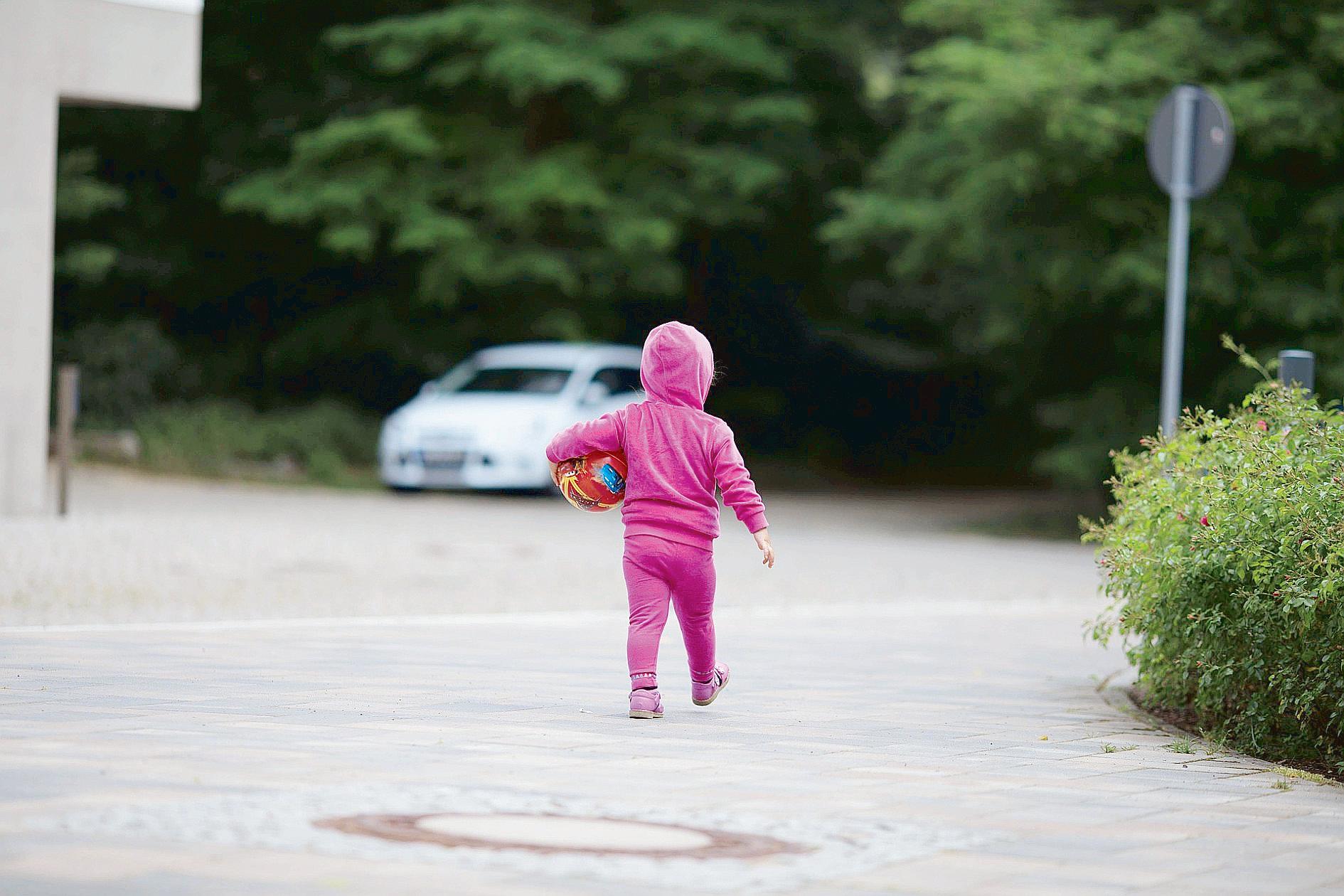

“By working together, we can create safer environments and protect our children.”
Victoria Police Road Policing Command Assistant Commissioner Glenn Weir said attending collisions involving young children and assisting families who have lost a child in a
low-speed runover were “among the most difficult of duties we undertake as police officers”.
“These incidents are preventable, which makes the loss even more poignant for the families involved and the wider community,” he said.

STEPHANIE Martinez starred in the first season of Making It on Network 10, where she discovered and ignited her passion for crafting.
Now she’s exploring the endless possibilities of crafting and turning everyday materials into something extraordinary - and she’s sharing exciting craft projects designed to inspire and spark creativity, like this paper fidget toy.
Materials
■ Assorted coloured paper/ cardstock
■ Skewer
■ Straw
■ Bead
Equipment
■ Scissors
■ Glue stick
■ Hot glue gun
Step 1: Cut ten strips of coloured paper and four circles from cardstock.
Step 2: Arrange the paper strips evenly around one cardstock circle and glue them in place. Then, glue another circle on top to secure them.
Step 3: Repeat the previous step with the other ends of the strips, attaching them to the remaining two circles.
Step 4: Carefully insert a wooden skewer through the centre of both circles. Use a hot glue gun to attach a bead at the top for security.
Step 5: Cut a small piece of straw and make several cuts to create tabs. Thread the straw onto the skewer and glue the tabs to the bottom circle.
Send us photos of your finished toy or tag us on Facebook or Instagram.

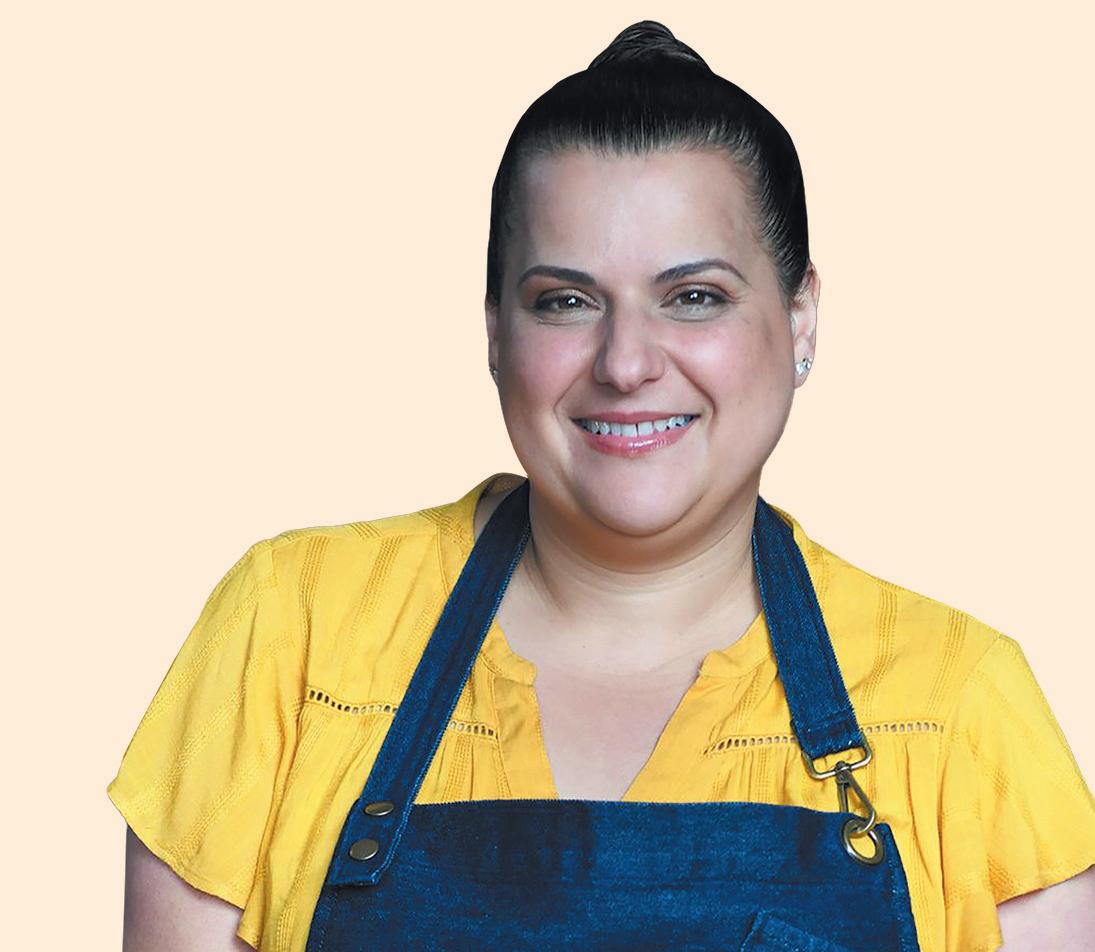




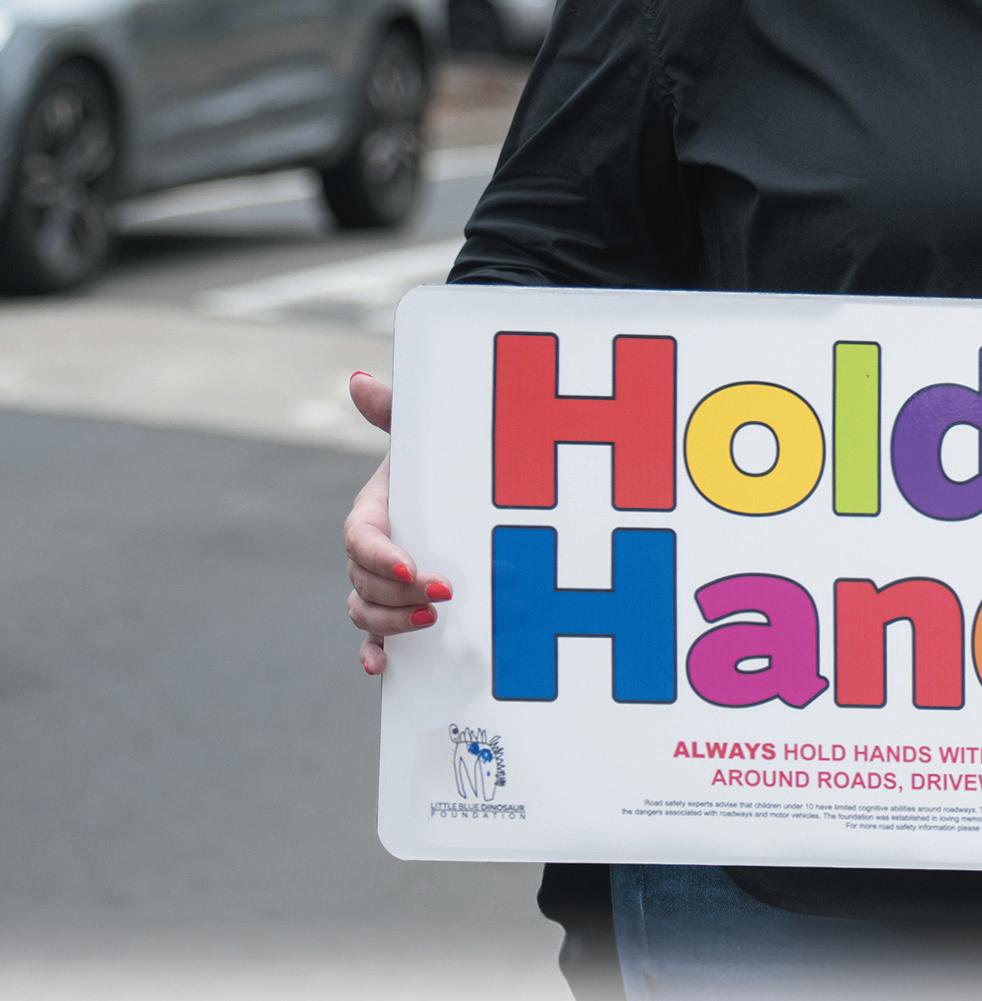
By Casey Neill
AT what age would you stop holding your child’s hand when crossing the street or walking through a car park?
Bereaved mother and road safety advocate Michelle McLaughlin says many parents are unaware that studies recommend hand-holding up to age 10.
“Holding your child’s hand is as important as putting a seatbelt on them in the car,” she said.
“They lack peripheral vision, their hearing isn’t great - they can’t discern where a vehicle’s coming from if they can’t see it.
“Their height restricts them from being seen by a driver.
“They’ve got slower reflexes - their brain and their body processes at a slower speed - so they keep taking those extra steps, which could put them in peril.”
Michelle’s son Tom stepped away from his family, onto the road, into the path of an oncoming car while on a holiday in January 2014. He died before help arrived.
“It was just really busy on that day; lots of parked cars on the street,” she said.
“Those towns are very quaint and beautiful, but they often lack infrastructure like curbs and gutters. It all played a part.
“I never for one moment imagined that our family would have to go through something like that.
“Little Blue Dinosaur, that’s been a healing entity for our family, and knowing that we’re doing all we can.”
Through the Little Blue Dinosaur Foundation (LBDF), Michelle has spent the past 10 years pushing to make Aussie roads safer for child pedestrians.
“The strong message that we really push is ‘hold my hand’ because since Tom’s accident, obviously we’ve been involved in a lot of research,” she said.
“We’ve done a two-year research pilot study looking into the causation of pedestrian deaths in Australia.”
They used 20 years of coronial data.
“Nothing’s changed there with the numbers,” Michelle said.
“It’s still one child every week dying in road trauma.
“That adds up to a lot of children every year.
“It leaves a massive impact on families long-term.
“You can’t ever find any justification in your mind because these are young, healthy, beautiful, vibrant children.
“They’re taken in a microsecond moment. It’s happening all too often.
“It’s the most stressful event that can take place in a person’s life, if they lose a child - in any circumstances, but particularly suddenly or traumatically.”
Her daughter, husband David, and in-laws witnessed the tragedy. Michelle was inside with her one-year-old son.
“We’ve really changed our whole life around since this tragedy happened,” she said.
“It affects your relationships, your daily responsibilities.
“Parents who go through this are at a higher risk of suicidal ideation, risk of alcohol and substance abuse, a lot of sleep disturbance from the trauma of having gone through an event like that.
“The other impact is marriage breakdown.”
Losing a child also hits families financially, including long-term counselling and other medical bills.

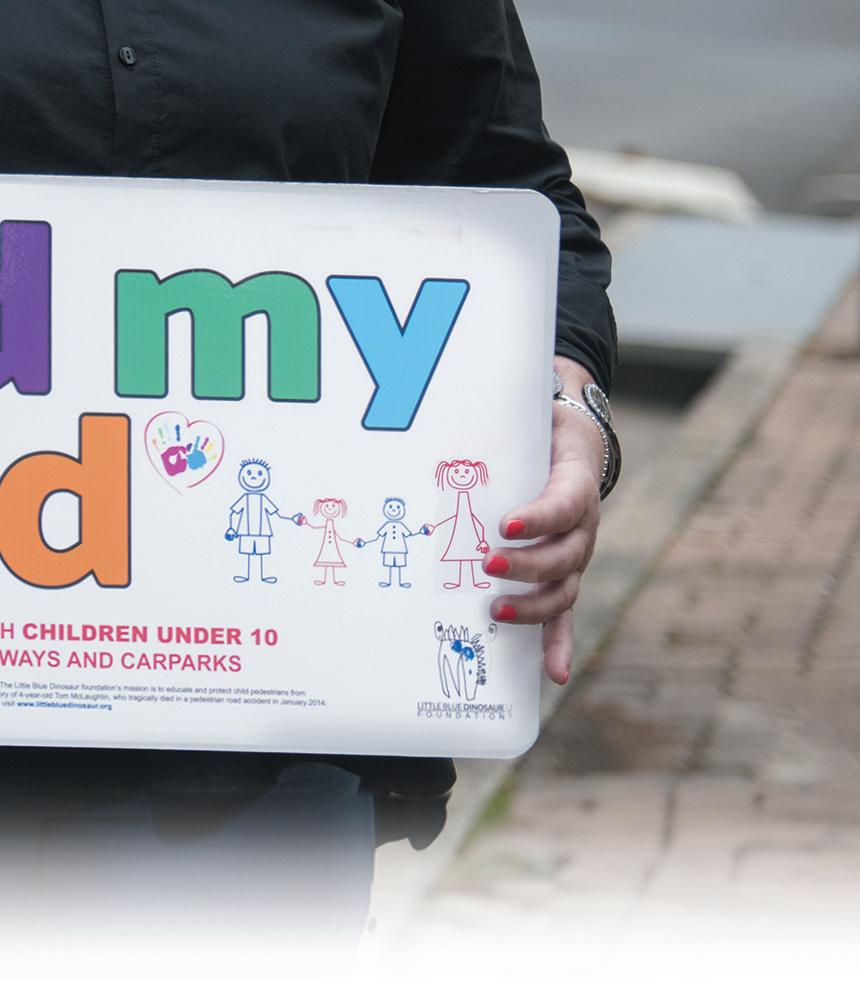
“People can’t necessarily immediately go back to work,” Michelle said.
“My husband had a lot of trouble concentrating at work.
“His business declined significantly for two years.
“I had been a nurse but I couldn’t go back and work in a high-stress environment anymore.
“I went into a hole and just managed looking after my baby boy and picking my daughter up from school.
“People keep away because they don’t want to disturb you. Yet you need all those little helping hands.”
Michelle said LBDF and Macquarie University studied the support services available for families who’d lost a child to road trauma.
“We’re really lacking practical assistance,” she said.
“Specialised support programs should be investigated.
“For 10 years I’ve tried in earnest talking to various MPs.
“I walked 10 kilometres in a day around Parliament House.
“There needs to be more action than just words from politicians and government.
“We try to advocate strongly on the research front and on the community awareness side.
“I wrote a book called Tom’s Holiday for the preschoolers.
“In the back of the book I made sure that it had educational information for parents.”
LBDF has also worked with 76 of Australia’s 537 local government areas to install colourful safety signage around playgrounds and busy roads and deliver education in preschools.


“If it could run in every LGA I think it would help and be impactful in preventing child road deaths,” Michelle said.
“Our studies show educational interventions like LBDF safety signage increase awareness of child pedestrian safety in the community.”
The talks in kinders include education on different types of roadways.
“I don’t even think in some of these places that children recognise them as roads,” she said.
“Discuss one aspect of road safety with your child every single day.
“Eventually it will sink in and stick.” For more information on The Little Blue Dinosaur Foundation or to make a tax-deductible donation, visit www.littlebluedinosaur.org.
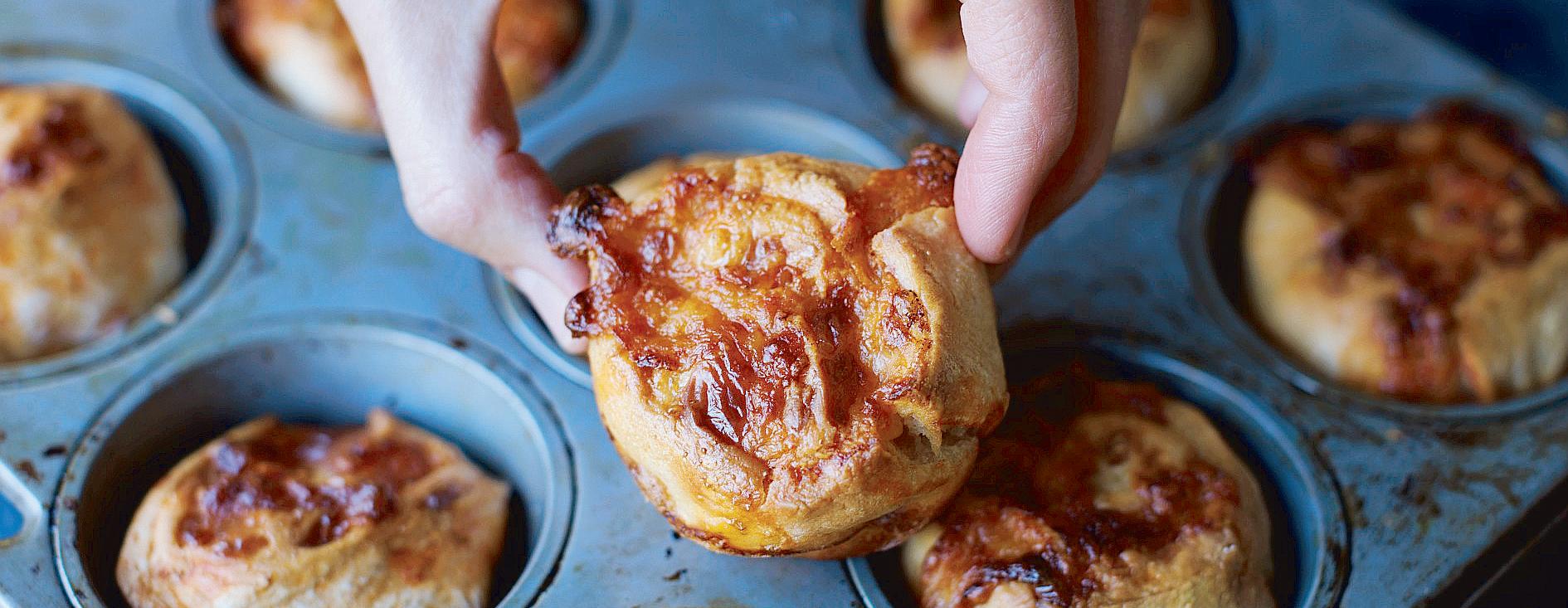





WHEN I was 11, I was allowed to go home at lunchtime on Fridays and make mini pizzas for my school friends and me.
I was in Year 6, we lived across the road from my primary school, and I thought this was awesome – the pizza part, that is. Living so close to school also meant I never had the excuse of leaving homework at home!
Mum would preheat the oven for me and I’d get all my toppings ready in the morning.
I’d cut a circle out of puff pastry, smear it with tomato paste, and add sliced ham, a sprinkle of dried herbs, and a good handful of cheese.
They’d bake until golden and bubbling, then I’d whisk them back across the road – wrapped in aluminium foil to keep them warm - to my awaiting friends.
My gluten-free pizza scrolls are an updated version of these.

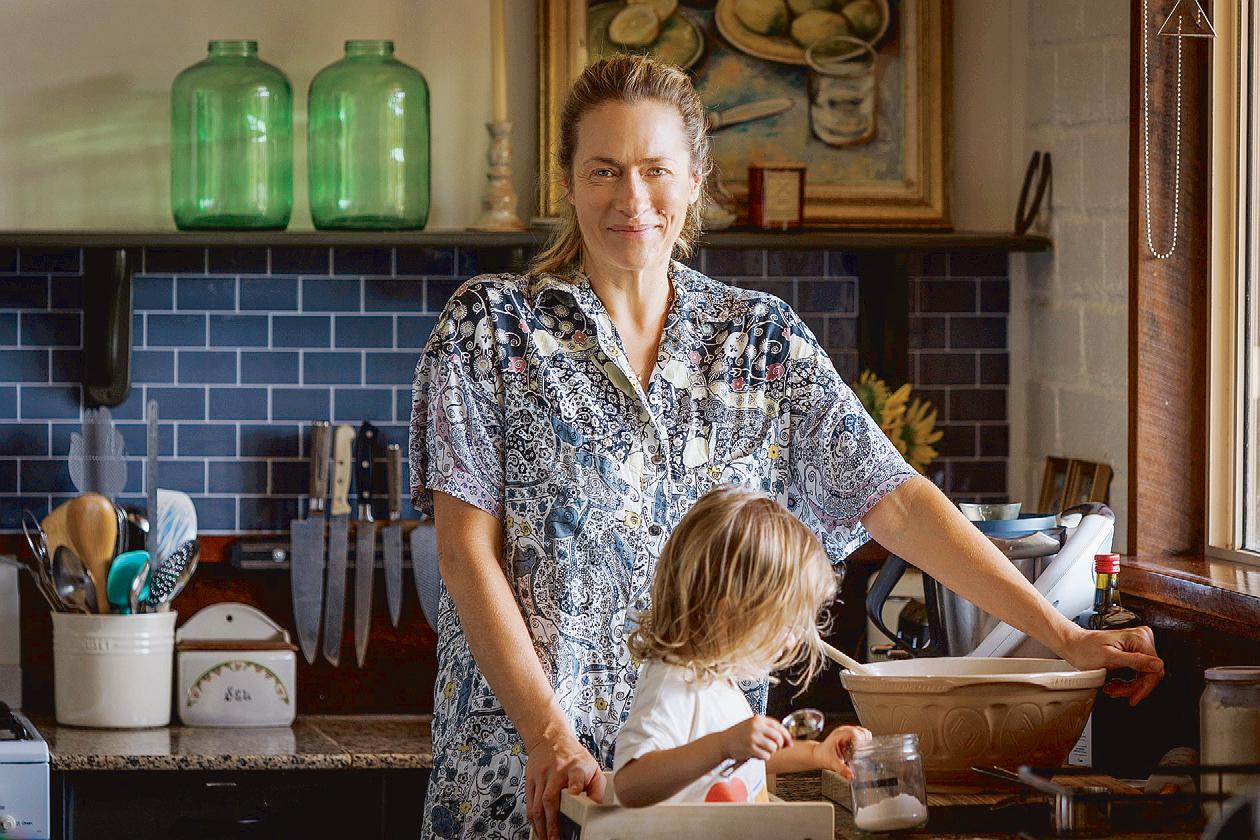
They’re perfect for little lunchboxes and eating with one hand for the kids more interested in playing than fiddling around with something to eat.
Millet and buckwheat flours, and yoghurt all add protein to keep tummies fuller for longer, and making the dough is a great sensory experience for kids to enjoy.
Makes: 16
Prep time: 20-minutes
Cook time: 30-minutes
Ingredients:
■ 2 cups gluten-free flour (I use equal parts millet, buckwheat, and arrowroot flours)
■ 2 tsp baking powder
■ 2 Tbsp psyllium husk
■ 1 cup whole milk yoghurt
■ 1 tsp sea salt
■ Tomato passata
■ 1 cup shredded mozzarella
■ 1 cup shredded tasty cheese
Instructions:
1. Preheat oven to 200’C. Lightly grease a muffin tray with olive oil and place in the oven.
2. In a medium-sized bowl, combine flour, yoghurt, psyllium husk, baking powder, and salt and mix with a wooden spoon until everything is
Well Fed Kitchen is a range of healthy snacks for kids that you can make at home.
Created by Nutritionist and mum, Lucy Stewart, they’re made with only real wholefood and plant-based ingredients – no additives, nothing artificial, and without nuts, dairy, soy and wheat.
Well Fed Kitchen provides an easy snack alternative to the sugar-laden, healthy pro- cessed options, guaranteed to fill kids tummies, satisfy their hunger, provide a steady release of energy and some essential growing nutrients too.
www.wellfedkitchen.com.au @wellfedkitchen_snacks


well combined. If the dough is too wet, wait a few minutes and allow the psyllium husk to absorb some of the moisture. You may need to add another tablespoon of flour until it’s no longer sticky.
3. Divide the dough into two.
4. Sprinkle a little flour over a sheet of baking paper and use your hands and fingers to shape one piece of dough into a rectangle about 20x25cm and 5mm thick.
5. Smear the dough with a small amount of tomato passata then sprinkle with grated cheese.
6. Working from the short edge, gently – this is a gluten-free dough so it will be much less forgiving – begin to roll your dough until you have a long sausage, pinching closed the edges and any areas that may split. Then slice into eight pieces. Repeat with the second piece of dough.
7. Place pizza scrolls, cut side up, in your pre-heated muffin tray, and cook for 25 to 30 minutes or until golden.
8. Remove from the tray and allow to cool before serving.
9. Store in an air-tight container in the fridge for up to three days.
Visit www.lucystewartnutrition.com or follow @lucystewartkidsnutrition on Instagram for more.

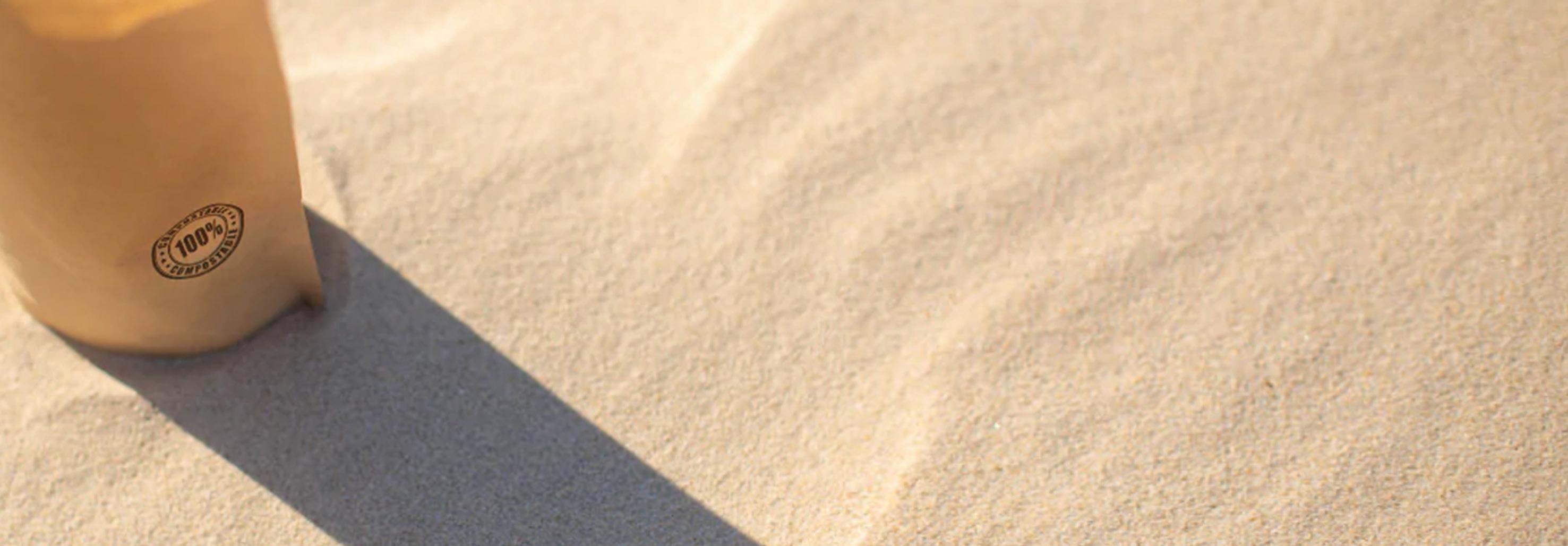
12562706-MS36-22

By Casey Neill
ISABELLE Silbery knew she should have been excited when she learned she was pregnant with her daughter.
Instead, her stomach dropped.
Izzy, best known for her eight-year stint on Gogglebox alongside mum Kerry and grandmother Emmie, had welcomed a son with her first husband 10 years earlier.
“I was working full-time in a pretty demanding job,” she said.
“The pregnancy wasn’t great and the birth wasn’t either. It was quite quick and traumatic.
“My waters broke at home and I was rushed to the hospital.
“I didn’t know if I was going to make it to the hospital.
“I was dropped at emergency while my husband got a park.
“Because it was all so fast and he was huge, I did have a big tear.
“I didn’t know how to breastfeed.
“He also had a tongue tie which wasn’t diagnosed for a week. I was breastfeeding through agony.
“My son didn’t sleep for the first year.
“My marriage broke down.
“We didn’t cope with it.
“I didn’t cope with it.
“I equated having a baby with a really bad time.”
Falling pregnant with second husband Alex Richards took Izzy right back to that time.
“When I saw the pregnancy test come up positive with Ruby, I felt my stomach drop and I thought, ‘That’s weird, shouldn’t I be happy, shouldn’t I want this?” she said.
“I’m in a relationship, I’m happy, I’m a different person now, and I’m older.
“Everyone was so excited but I wasn’t.
“I was faking it a lot.
“I confided in Mum and she said, ‘You went through a lot with your first, your marriage and the divorce, and do you really think you’ve resolved all of that? I think you should go and speak to someone about it’.
So Izzy saw a prenatal psychologist at a women’s clinic, who said it was no wonder she wasn’t feeling overly joyous.
“I said things out loud about being left a single mum and the challenges it had on me physically and mentally,” she said.
“You think you close the door on something…
“I just worked through all of it.
“I was really able to share that with my current husband. He learned a lot about me and what I’d been through.
“His understanding and support really helped me.
“It was also really good to be honest with my outer circle.”
At school pick-up she spoke about her therapy journey with other parents.
“I got on some safe medication as well as doing therapy the whole way through,” she said.
“We had a whole plan in place in case the birth was traumatic again, or if I was sleep-deprived.
“I had a lot more things put in place beforehand instead of waiting for things to go bad.
“Ten years ago they just didn’t value it.
“Women’s health in general is only now just becoming ‘we need to invest in that and talk about that’.”
At 39 weeks, her obstetrician said: “Let’s take control of this. Your first birth was quick, the second will be quicker. I think for your mental health and making it to the hospital, let’s induce you and do it as beautifully and as controlled as we can.”
Izzy’s labour with Rub lasted only an hour.
“She was a bit smaller and I had my mum there and my partner’s mum there and my partner holding my hand,” she said.
“It was in a room full of women who were holding me physically and mentally.
“I literally just breathed her out.
“It was empowering - f*****g painful - but just really good.”
She had a supportive partner and hands-on dad by her side after returning home.
“He’s a stay-at-home dad and he did all the heavy lifting,” she said.
“I got the opportunity to rest as much as possible and focus on bonding with her and feeding her.
“Food was in the fridge and other mums would help me with pick-up and drop-off - maybe that’s because I was really honest and open about the situation.
“Things were done so I could be the best possible mum in recovery.”
A few months in, she needed more support and spent a week at Homb.
The Elsternwick postpartum recovery centre nurtures and empowers new mothers, striving to prevent postnatal depression and anxiety.
Izzy described her stay as “real respite”.
“Every mother should be offered this service,” she said.
“In lots of cultures and lots of other countries, that’s what they do - they stay at home and they’re fed and their babies are looked after.
“They literally stay in bed for the first six months.
“It takes a minimum of a year to get back to normal, physically and mentally, and that’s okay.
“It is really important to make a conscious effort to reconnect with yourself and also reconnect with your partner.
“Just because there’s little kids that need you, it’s really important to make adult time and have adult conversations and do what brought you together in the first place.
“Nothing is more important than our relationship, first and foremost, and then you can be the best parents after that.
“I get so nervous about leaving them, but you can, it will be fine.
“Just to take a moment for your own mental health as a mother.
“Get a massage, get your hair done, read a book in the sun, just to recharge those batteries.
“And don’t feel guilty about it.
“We’re programmed to think we’re at this thing’s beck and call.
“But they need the best version of us, not the completely f****d version of us.”
As well as working through her own concerns about welcoming a new baby, Izzy needed to prepare her son for stepping into the role of big brother.
“I was scared. I was nervous and scared,” she said.
“My son was not happy about another baby. He made that very clear.
“So I spent the whole pregnancy coaching him and just being there for him and reassuring him.
“I was really worried about him, to be honest.
“I was worried he’d feel on the outer because he was from a previous marriage.
“He said, ‘Will you still love me?’.


“I took him to a child psychologist. I encouraged him to chat to my mum and me.
“The door was open for him to sit with his feelings.”
Izzy’s support for her first-born paid off.
“He was so besotted by her,” she said.
“He’s just been amazing.
“All the fear and anxiety was gone from myself and him, I think, when he saw the new family dynamic and it was working and there love was for everybody.”
Ruby was 13 months old when we spoke.
“He’s just so amazing with me and her,” Izzy said.
“He can see when I need help, he can get me stuff.
“It’s quite empowering for him as a child.
“He’s growing up a bit more and having that responsibility and being caring.
“I’m so passionate about raising emotionally intelligent boys into men.
“Having that little sister in his family life is really a good opportunity for him to engage in that softer, nurturing side.”
He told Izzy she was a great mum, and that taking care of him on her own would have been hard.
“I think it made him really reflect,” she said.
Reflecting on her own experiences, Izzy had some simple advice for partners of new mums.
“Just encourage her to be gentle on herself,” she said.
“Just say, ‘We’ve got this, we’re a team. We’re doing this together’.” I



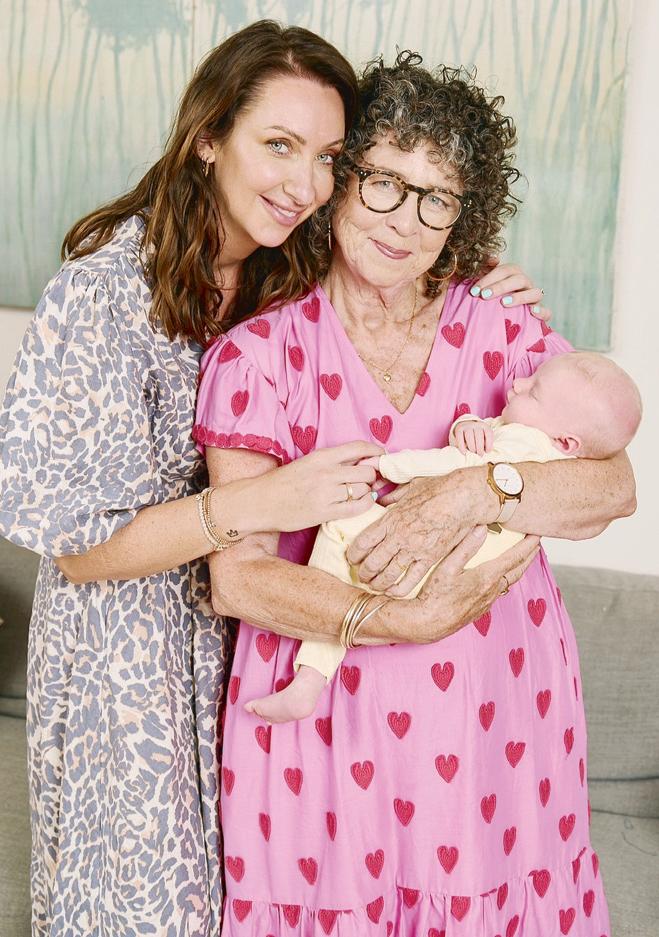




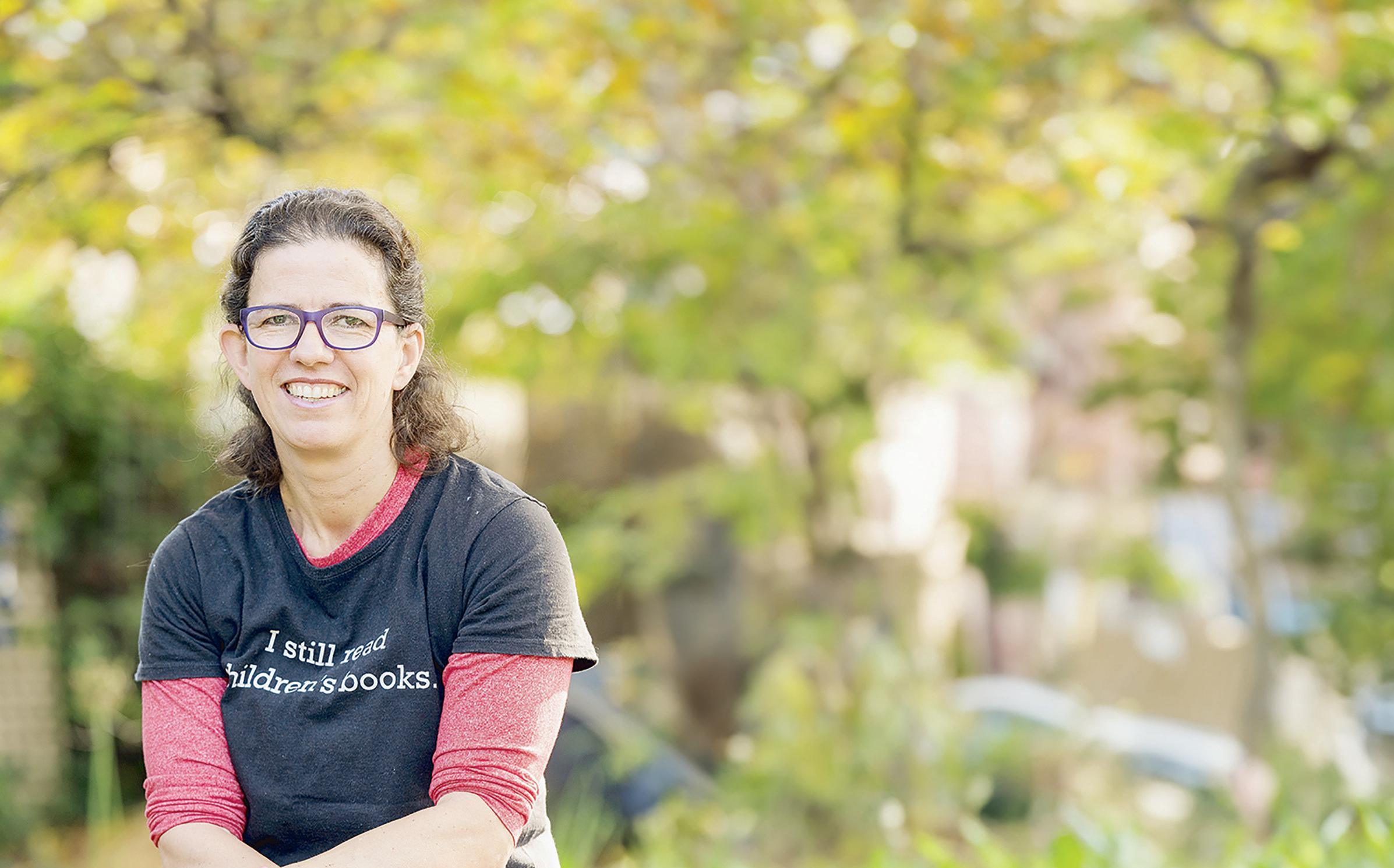
By Casey Neill
WRITING a new Nanny Piggins story was like returning to a second home for author RA Spratt.
“Their universe is in my brain,” the mother of two teenage daughters said of the characters.
“They were just waiting for me to come back to them.
“It’s a strange magic in my head. They’re like real people.”
Penguin Random House Australia published Nanny Piggins and the Origin Story late last year - about 10 years after the last book in the series was released.
“I’ve done so much since - I’ve written 18 other books since,” RA said.
“She was my first series of books and she was such a great character.”
So much so that Nanny Piggins narrates RA’s popular podcast Bedtime Stories with RA Spratt.
“She has such blisteringly confident views,” RA said.
“No matter what goes wrong, she’s never worried.
“She‘s so proactive and positive.
“She was such a great character to bring back for the Covid times.
“She solved everyone’s problems.”
After the world’s most glamorous flying pig came to life on the podcast, fans asked RA to write a prequel to the series following Nanny Piggins’ life after she left the circus. She delivered.
“She always eludes to things that
happened before she landed at the Greens’ house,” she said.
“I got to unpack and revisit so many characters.
“You go back emotionally to when she’s a piglet and he’s unsure of herself.”
Nanny has 13 identical sisters - all of them evil.
“That was fun to revisit,” RA laughed.
“It was so hard to keep track of who was who and how they were evil.
“The ringmaster, when he appears, he’s such a fun character, short and fatbottomed with an amazing moustache.
“Somehow the book ended up in Bolivia. I’ve never been to Bolivia!
“I listen to podcasts about history because I love history.
“I wanted to set it somewhere landlocked.”
So she travelled to South Americaalmost. She dived into a research rabbit hole and used Google Maps to ‘walk’ the streets.
“It makes it easier to explain the minutia of what a street would look like,” she said.
“That was fun, now I want to go to Bolivia.”
Nanny Piggins exposes readers to geography and science, expanding their ideas about the wonder of the world.
She also offers comfort to readers with anxiety, RA said. Parents often message her to say the stories have helped their children through tough times, from chemotherapy to Covid lockdowns.
“Nanny Piggins has this amazing talent


for making people feel better,” she said.
“I’m proud of that and that’s wonderful feedback to get.
“I’m proud of how much I’ve been able to help kids with anxiety, especially through Covid.
“People talk about literacy all the time, but stories are very important to children’s emotional development.”
Her favourite feedback came in the form of a tweet from a parent about her Friday Barnes series.
It said they were cross with her because their daughter missed the bus that morning, engrossed in Friday’s world.
“That’s the highest compliment for a book,” RA laughed.
“My goal has always been to entertain children.
“I want them to enjoy sitting down and reading a book.
“It sounds like a small thing, but it’s actually a really big thing.
“When you tell a story to a child you can tell when you catch their imagination.
“There’s a moment where their eyes go a little bug and you can see you’ve captured their attention.
“You know it’s going to be a good book.”
RA finds it easy to tap into - and write for - her inner child.
“I think emotionally I’m pretty much frozen as an 11-year-old,” she said.
“I’m very good at remembering the way things felt when I was a kid.
“I was a difficult kid, probably.
“I didn’t smile a lot and that used to disturb people.
“When you’re young there’s so much emotion.
“I remember the horror of having Target jeans when everyone else had Levis.
“I used to go to the library a lot.
“All there was to do was ride your BMX around and go to the library or Coles.
“I read everything for my age group, and probably some things I shouldn’t have read.
“I listened to heaps of audiobooks on cassette.”
RA was a TV writer for 10 years before she became an author.
“My spelling and grammar is so bad it never occurred to me that I could have been an author,” she laughed.
Her TV journey began with work experience on Good News Week when she was 22. She was handed three news clippings from the week and wrote jokes about them.
“These jokes are frighteningly good!” was the response.
She explained that writing them was like haiku.
“Every word, every syllable matters,” she said.
“You need to twist it to surprise the audience and make them laugh out loud.
“I’m a comedy writer at heart.
“I could just come up with stories all day long.”








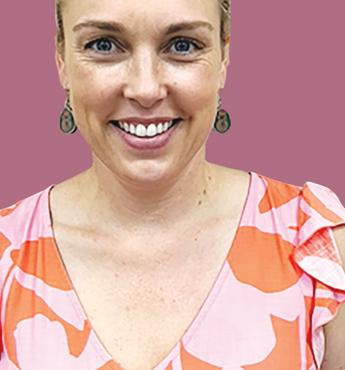
THIS may come as a surprise to some, but mindfulness doesn’t always have to be serious; in fact, it can actually be fun!
When I first started practising, I used to think that mindfulness solely involved setting aside a period of quiet and uninterrupted time, sitting in the traditional meditation pose, and approaching the whole practice with a heavy sense of seriousness.
However, after attending mindfulness and meditation retreats, taking part in regular yoga practices, and learning from the experts, my thinking has since shifted.
I have now realised that there are many occasions where mindfulness can be approached in a fun and light-hearted way.
And when teaching mindfulness to kids, this approach is particularly important.
Mindfulness doesn’t necessarily have to be done during an allocated period of time.
Instead, it can be practiced in small moments throughout the day.
For example, when you’re walking outside, pay attention to what is happening - notice the concrete path beneath you, listen to the sound of leaves crunching under your shoes, and be aware of the scents you can smell.
Other activities that can be done mindfully are washing the dishes, having a shower, eating a meal, or brushing teeth. (When brushing your teeth, you could even try using your non-preferred hand and notice how that feels).
The key is simply to be present and stay connected in the present moment, even if only for a brief period.
Moving your body with intention is another fun mindfulness practice.
For example, swinging your arms from side to side, raising your arms up to the ceiling and bringing them down again, or walking in slow motion while paying attention to the bones and muscles you’re using, are simple yet effective ways to connect to the present moment.
Listening to music can be another enjoyable and light mindfulness practice.
Choose a favourite song and really listen to it; for example, notice the instruments that are being played, carefully listen to the words, and be aware of how you feel as you listen to it.
In this way, music can have new meaning for you, rather than just being some noise in the background.
Of course, it is still highly beneficial to take part in more formal practice when you can, where you set aside some time to be still with an empty mind and focus solely on the breath, the parts of the body, or sounds around you.
For kids integrating mindful moments throughout the day will be much more appealing and attainable. This is more likely to lead them to form regular mindful habits that will continue for years to come.
Fiona is an experienced primary school teacher with a passion for student wellbeing.
She runs mindfulness programs to equip primary school-aged children with mindfulness strategies to help them lead healthier and happier lives.
Find more from Fiona at mindfulness4kids.com.au or search Mindfulness 4 Kids on Instagram or Facebook.
HAVE you noticed how the most confident and socially adept children often had early exposure to structured group activities?
Structured music and movement classes are a powerful catalyst for social growth and school readiness.
Children who develop strong social skills early experience remarkable benefits, including enhanced academic performance, deeper friendships, and greater emotional adaptability.
Mini Maestros music and movement classes for children aged up to five years offer a special environment where social skills can flourish.
Playing instruments to a steady beat, dancing together, and singing with others create important moments of connection and a sense of belonging, achievement, and fun.
In a supportive and encouraging atmosphere, each musical interaction and game helps develop connections.
Call-and-response singing becomes a metaphor for effective communication.
Children learn to listen, respond with sensitivity, and recognise that every voice matters.
Freeze dance games teach children to move in harmony, celebrate individual expression, and support one another’s unique journeys.
Patience isn’t just waiting—it’s an active skill of respect and controlled anticipation.
At Mini Maestros, turn-taking is learned and practised in fun ways.

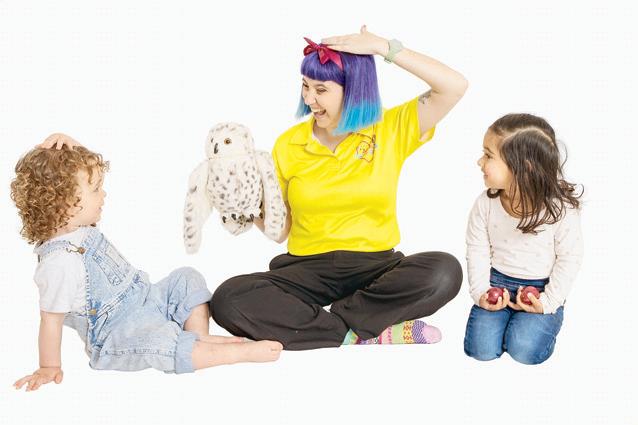
Passing games teach children that excitement lies not just in personal participation, but in supporting others’ moments of joy.
Children discover that true connection involves creating space for others as well as participating together; listening carefully, anticipating, and responding with empathy.
Each moment of waiting becomes a small act of kindness, each shared activity a celebration of togetherness.
Mini Maestros classes offer:
■ Small group settings with experienced, engaging educators;
■ Interactive, play-based learning;
■ Age-specific programs that build school readiness;
■ A supportive environment that transforms individual contributions into shared outcomes and community connection; and
■ Flexible programs that respect family dynamics.
Mini Maestros – believing in every child’s potential.
Enrol now or find out more by visiting minimaestros.com.au or calling 9850 5566.

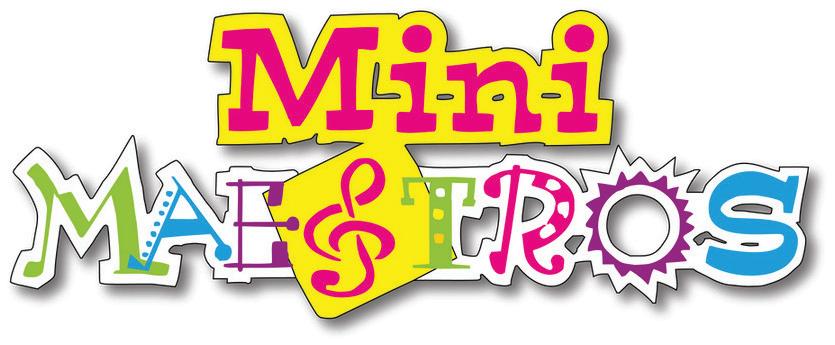
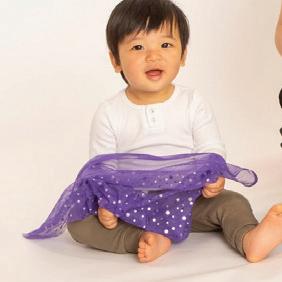




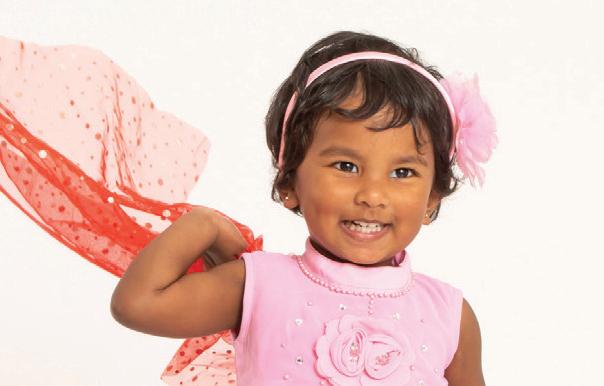






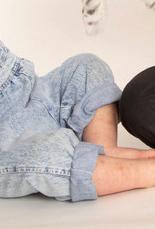
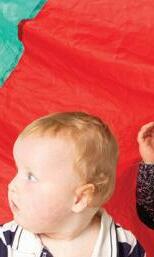
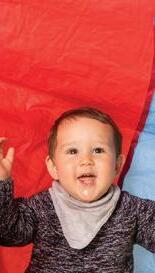























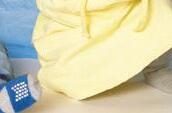










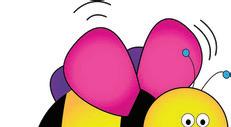


VICTORIAN newborns will now be screened for an additional rare and serious genetic disorder free of charge.
Testing for galactosaemia will be included in Victoria’s newborn bloodspot screening program, run by the Victorian Clinical Genetics Services.
Commonly referred to as the ‘heel prick test’, the newborn bloodspot screening program is designed to help parents get their children early treatment for rare health conditions so they can live long, healthy lives.
This latest addition means the screening program now tests for 32 conditions and is offered to parents of all newborns within their first 72 hours of life.
Galactosaemia is a rare genetic condition that prevents the body from metabolising galactose, a type of sugar found in milk and other dairy products.
The most serious form of galactosaemia occurs in about one in 50,000 babies and can cause lifethreatening liver disease, infections, and cataracts if not diagnosed soon after birth.
Through screening, affected babies will be detected and treated early to prevent these symptoms.
Treatment consists of restricting dietary galactose, including replacing dairy milk with lactose-free formulas.
The State Government also expanded the newborn bloodspot screening in 2024 and 2023, investing more than $1 million to add testing for spinal muscular atrophy, severe combined immunodeficiency, and congenital adrenal hyperplasia.
In 2024, more than 75,000 Victorian newborns were screened.
Newborn bloodspot screening began in Victoria in 1966. One in 1000 are found to have a rare but serious condition, such as congenital hypothyroidism and cystic fibrosis. More information on the program is available at betterhealth.vic.gov.au.


I am delighted to introduce Australia’s largest multi-sport program for children aged 1.5 to 6 years.
At Ready Steady Go Kids, we believe in the power of early childhood development.
Our program, meticulously designed by paediatric physiotherapists and occupational therapists, aims to foster children’s gross and fine motor skills and instil a love for sports in a noncompetitive environment.
One of the hallmarks of our program is its comprehensive approach to skill development.
We expose children to 10 different sports, enabling them to acquire a broad range of skills.
This diverse curriculum not only builds a solid foundation of sporting knowledge but also ensures continued interest and enthusiasm throughout the program.
By offering this variety, we strive to nurture a lifelong love for physical activity.
Our program goes beyond sports training. We integrate basic counting and colour concepts into our classes, fostering cognitive development alongside physical skills.
Through teamwork and sportsmanship, children learn the value of collaboration and fair play, while also
building social skills that will benefit them in their future interactions.
Our carefully designed activities also enhance listening skills and concentration, laying a strong groundwork for success in the early school years.
At Ready Steady Go Kids, we understand the importance of individual attention.
To ensure optimal learning outcomes, we maintain a low student-to-instructor ratio of 1:7, with class capacities limited to 14 children.
This allows our dedicated instructors to provide personalised guidance and support to each child, tailoring the activities to their unique needs and abilities.
We believe that this individualized attention fosters greater self-confidence, enhanced self-esteem, and a genuine sense of achievement, all of which contribute to the overall well-being of our young participants.
We pride ourselves on our unwavering commitment to delivering our program, come rain, hail, or shine.
With our indoor facilities, we guarantee that every class will proceed as scheduled, regardless of inclement weather.




We also offer multiple make-up classes at any one of our locations at any time should you ever be unable to attend a class.
This reliability ensures that your child’s progress and development are never hindered, offering peace of mind to parents and a consistent learning environment for our eager participants. Come and join us for a FREE TRIAL

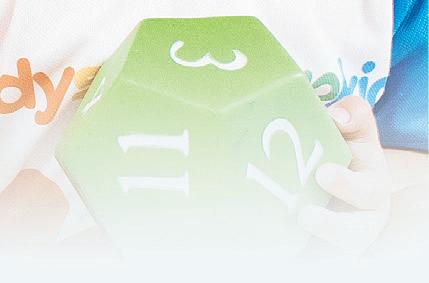
class at one of our Balwyn North, Templestowe Lower, Hawthorn or Doncaster East locations. Visit readysteadygokids.com.au for more information.
Lachlan Price, Franchise owner Balwyn and Hawthorn Regions

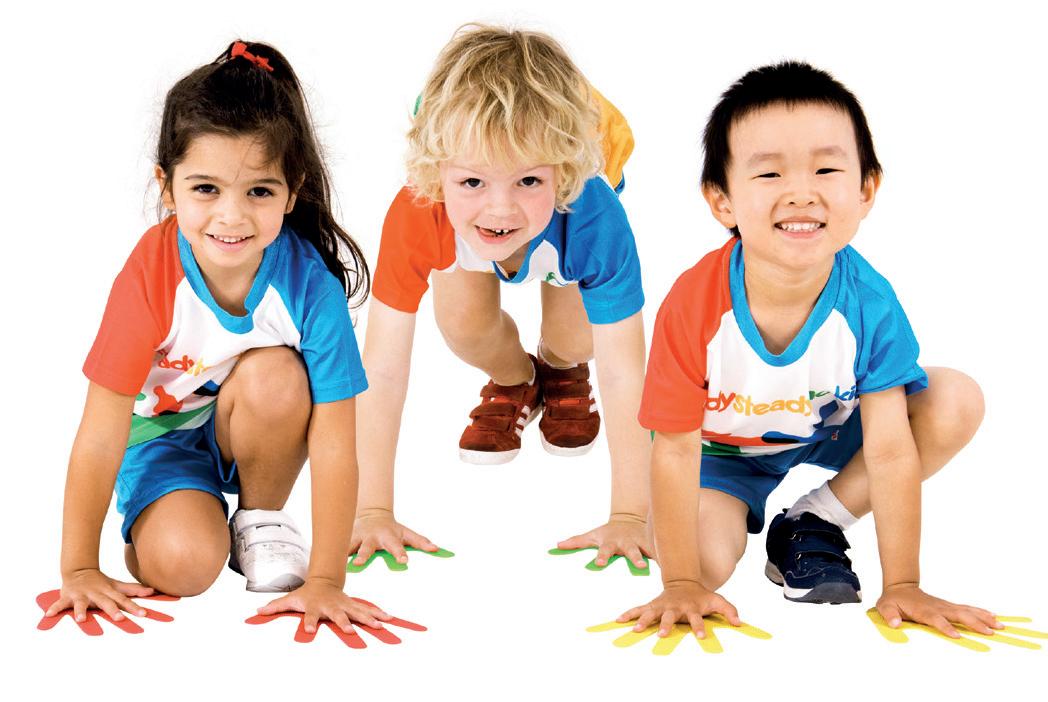
DR CAMMI
MURRUP-STEWART’S journey through pregnancy and motherhood has been complex.
The Gidget Foundation Australia ambassador is a proud Indigenous woman living with mobility, pain, and fatigue disabilities as well as hearing loss.
Themental health researcher and academic faced a lot of anxiety about her ability to parent with her disabilities.
Onceher daughter, Arinya, was born, Cammi had to find an approach to motherhood that suited her body while navigating a healthcare system that did not understand her needs.
I remember a conversation I had with friends when I was considering starting a family - I shared that I was terrified that I wouldn’t be able to do it.
Parenting is the hardest thing people can do, and parenting with a disability can be like stepping into a giant unknown.
I wasn’t sure how my body would cope, what the health implications would be for my child, how I would be able to care for a toddler running around when I couldn’t go everywhere or hear everything.

I was scared. But I wanted a child.
My friends who already had children kept saying, ‘You’ll be fine’.
It felt like they were brushing off my fears, but in hindsight, they were trying to say, ‘You’ll never be “ready” and everyone has their challenges’.
They knew me and my partner, knew our strengths and abilities, and knew they would be there to support me.
On reflection, much of the fear we had was because of the way ‘good’ and ‘bad’ parenthood is portrayed in our society.
We see this upheld in patriarchal ideas of bubbly stay-at-home mums visiting playgrounds, supported by happy and hardworking husbands, or social media ideas of funny mums with cute kids that might be a bit messy but definitely have the perfect sleep routine. This is despite the fact we know most families don’t fit that idea of perfect.
Housing and food is expensive, climate change is terrifying, parental leave is never enough, and breastfeeding is HARD but so is formula feeding.


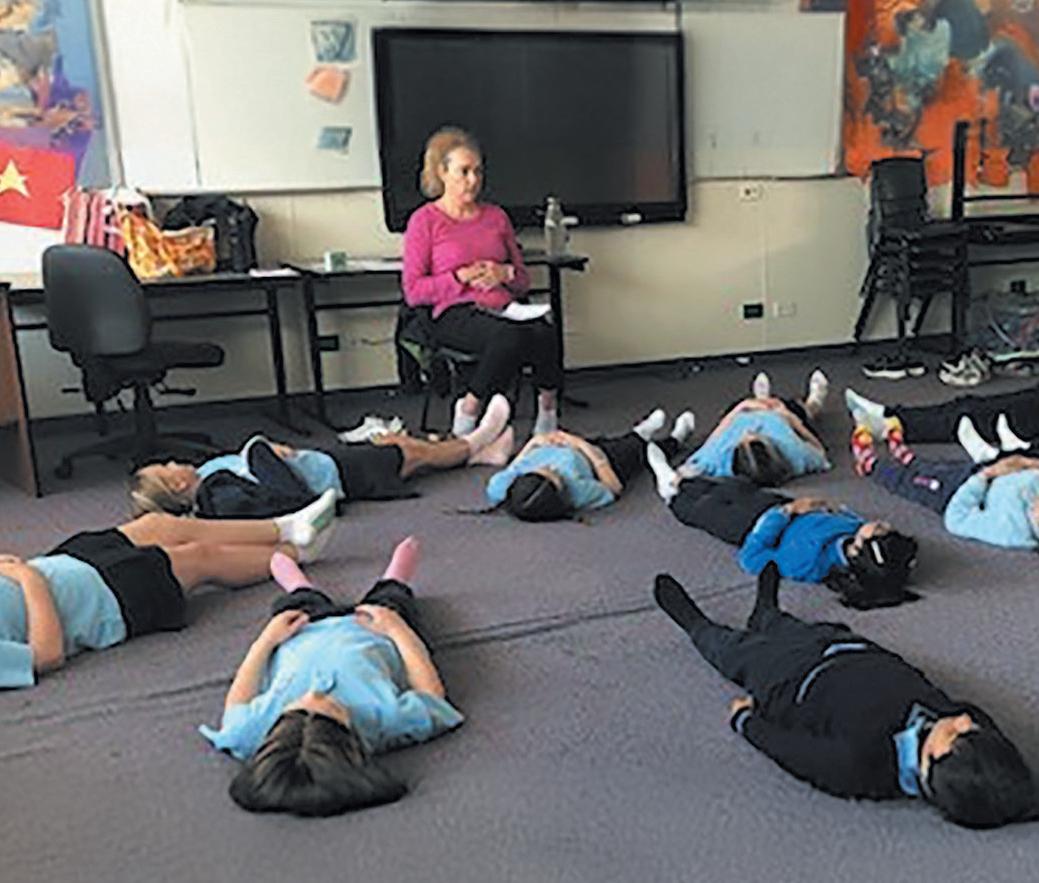


My kids won’t react the same way your kids will, the routine you have doesn’t fit with the chaos I have.My family’s cultural makeup means we do things differently to yours. But this is all okay.
Parenting with a disability:
The emotional and physical toll
For those of us navigating parenthood with a disability, the journey often includes layers of physical and emotional complexity that others might not see.
Managing health needs while caring for a little one can feel isolating and overwhelming, particularly when formal support systems fall short, and this can take a real toll on mental health, especially without adequate support systems.
In those early days, it’s easy to feel alone or unsure where to turn.
I recall a meeting with an occupational therapist, who was to help me set up my supports under NDIS while I had a very young newborn.
I wanted to know the equipment, services, and adjustments available to make parenting easier. Hearing this professional simply state that they didn’t know was terrifying.
They didn’t know how I was meant to use a cot in the manner recommended when I was in a wheelchair.
I explained to the maternal health nurse that I was really tired. They said that was normal for new mums, ignoring that my tiredness was compounded by my chronic illness and I needed help.
I was fortunate to have my mum’s help and a GP who went the extra mile in understanding my needs and my anxieties and coming up with helpful solutions, but I needed more than helpful professionals.
A message to friends, family, and community members
For parents like us, a community that understands and offers support without judgement can make all the difference in the world.
Sometimes it’s having a friend go and Google your conditions so they don’t pepper you with questions.
Sometimes it’s offering to change a meeting time to suit your needs.
Sometimes it’s a text message in the middle of the night to check in and ensure you’re not doom-scrolling and feeling lonely.
Sometimes it’s facing down the busybodies who stare in disapproval when you, a young and healthy-looking person, park in a disabled bay with your baby and disability parking permit.
So to the friends, family, and community members of parents with disabilities or parents of children with disabilities, know that your support truly matters.
Your encouragement, small gestures, and practical help can make a powerful impact on mental health and resilience.
If you’re wondering how to help, tackling ableism and creating space for our realities can make a huge difference.
Sometimes just being there to listen without judgment or giving us a chance to talk openly about our experiences is the greatest gift you can offer.
And sometimes, kids can offer the best example of that.
My daughter’s kinder classmates are fascinated by my wheelchair, asking questions their parents wouldn’t dare.
But their simple acceptance of difference (and joy at the idea of ‘riding’ in a wheelchair) gives me so much hope.
We can all learn so much from them.
By creating a culture of care and understanding, you are not only supporting that parent, you’re strengthening the entire community. Building a culture of empathy and understanding
At the end of the day, community is about shared values, kindness, and empathy. It can feel like many of those principles are lacking in our society at the moment.
Recognising the unique needs of parents with disabilities, or parents of children with disabilities, creates an environment where everyone is encouraged to ask for support without stigma.
For parents with disabilities, a supportive community can make the difference between isolation and connection, between struggle and resilience.
Sometimes we need help to build our self-compassion. We need that reminder that everyone does things differently and that we have each other’s backs.
Every small, thoughtful act from friends and neighbours can have a powerful effect on mental wellbeing.
New in 2025: 3-week Online Program - Introduction to Mindfulness Weekly after school sessions
Commencing: Tuesday 18th of March Tuesday 1st of April
Every Tuesday from 5.30 - 6.15pm
Cost: $8 per session
Parents are welcome to attend free of charge.




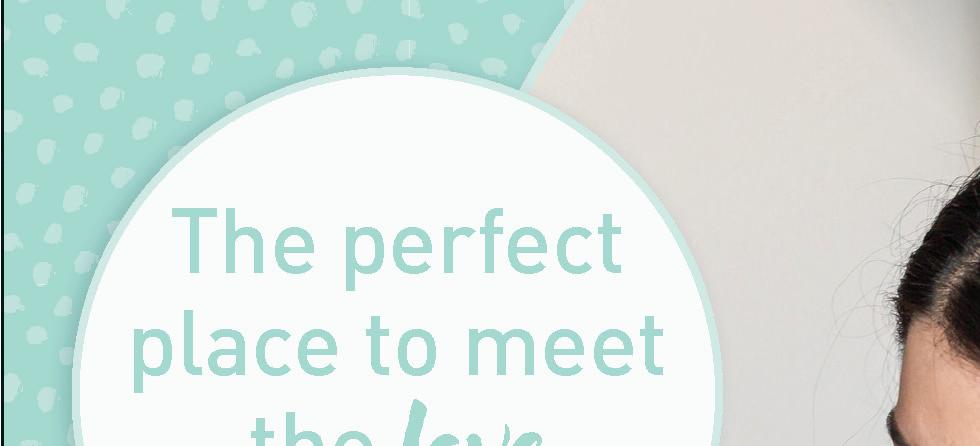






Enjoy exceptional care, a boutique private room and restaurant quality meals as you welcome your baby to the world. ptional private li


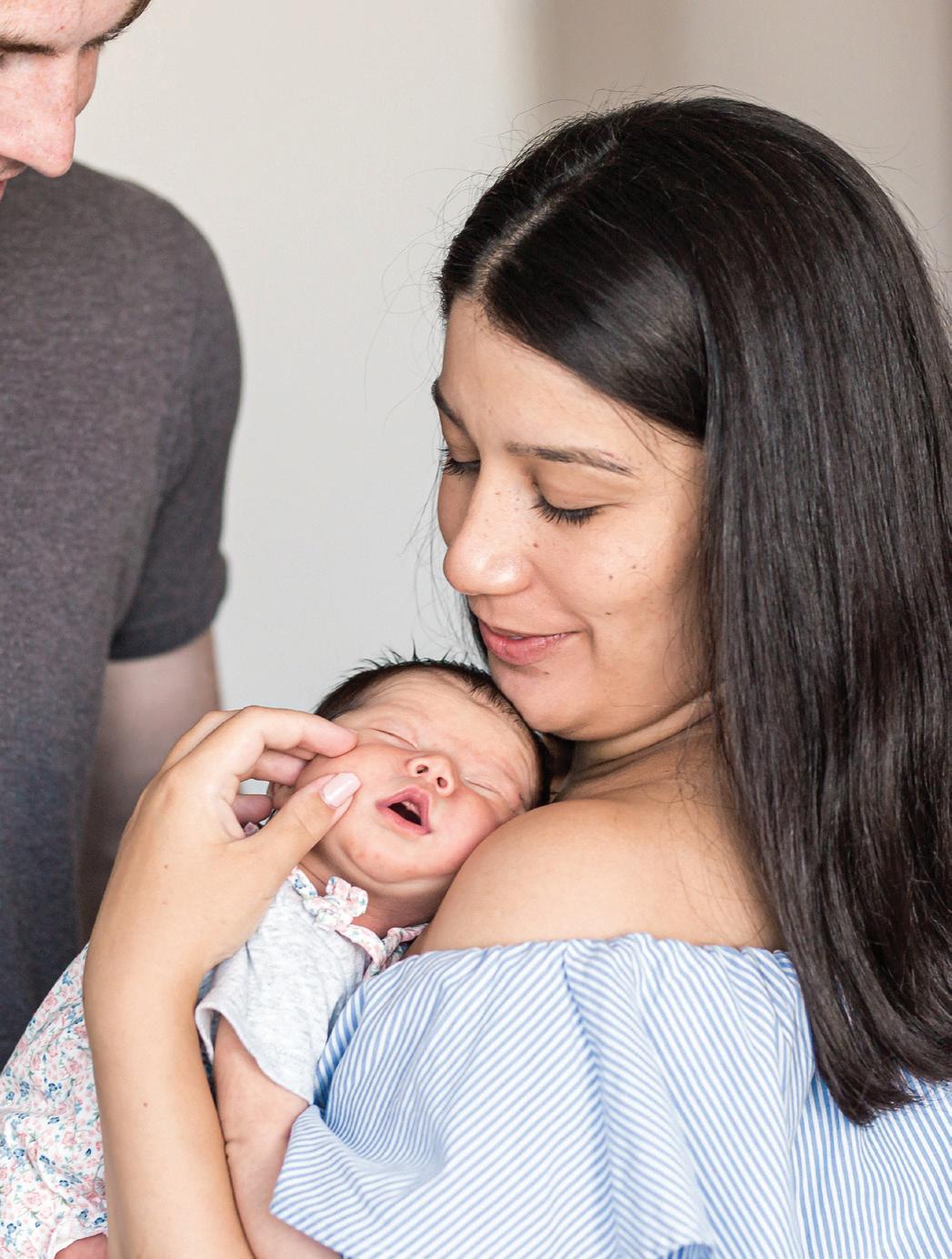
Epworth Freemasons Maternity call 03 9418 8300
Level 2, 320 Victoria Parade East Melbourne | epworth.org.au


Scan me to learn more about Epworth Freemasons Maternity
THE Modern Orthodontics team believes that a healthy smile is about more than just looks—it’s about feeling good too!
Whether you’re a child, teen, or adult, orthodontic care can help improve your bite and overall dental health.
Why orthodontics is important
Healthy alignment and bite Orthodontics can help with overbites, underbites, jaw discomfort, and misaligned teeth.
Confidence and a beautiful smile
A straight, well-aligned smile enhances self-esteem and leaves a lasting impression.
For all ages



It’s never too late to improve your smile! Orthodontic treatment benefits children, teens, and adults alike.
Treatment options for every ageFor teens and adults: Invisalign® clear aligners offer a discreet and comfortable way to straighten teeth without metal braces.
Braces for everyone
We offer traditional and ceramic braces that are both effective and comfortable.
Why choose Modern Orthodontics?
Expert care
The team has more than 20 years of experience in orthodontics.
Advanced technology
Modern Orthodontics uses the latest tools like 3D scanning for precise treatment.
Customised plans
Every smile is different and Modern Orthodontics tailors treatment to fit your needs.
Convenient locations and flexible appointments
The Modern Orthodontics team is there when you need them!
Take the first step towards a healthier, more confident smile today. Schedule a consultation with Modern ORthodontics and see how orthodontics can improve your dental health.



Three Best Rated® Top 3 Orthodontist in Melbourne 2018-2024
• Future-proof your smile
• Specialist orthodontic treatment for straight teeth
• Free In-person and Virtual Consultations
• Multilingual orthodontist and staff
• Highly experienced team
• State-of-the-art treatment rooms
• Bespoke treatment plans


SELECTING your child’s school is a huge life decision.
The St Roch’s team helps each student find their own voice and strengths, giving them the best opportunities to lay a secure foundation at the beginning of their learning journey.
The Glen Iris catholic primary school will support your child’s academic, social, and creative needs.
Staff deliver an engaging curriculum with a balanced approach to learning to ensure the best start for your child’s future.
St Roch’s is committed to developing students who think critically and creatively and are empowered to be collaborative problem solvers.
From Prep to Year 6, the school is committed to developing an environment where every child can succeed through different subjects, activities, and strong leadership opportunities.
With small class sizes and learning support officers across each year level, teaching at St Roch’s is designed around the individual needs and interests of students.
Dedicated staff create communities of learning that invite questions and support students to be curious and develop the skills and resilience they need to succeed as lifelong learners.
The recently finished award-winning senior school hub, which includes the
administration area, staffroom, and reception area, is now open overlooking the grand outdoor classroom.
The innovative design compliments existing facilities ensures that St Roch’s remains one of the best-performing Catholic primary schools.
Analysis of the 2024 NAPLAN Results shows that St Roch’s is among the top seven percent of all 1700 primary schools in Victoria.
Your child’s faith will be nurtured with a strong connection to the St Roch’s Parish.
Students are given many opportunities to develop their spirituality through their participation in religious education and social justice activities.
By joining the St Roch’s community, your family will become an integral part of the school.
St Roch’s celebrates diversity and a huge focus on wellbeing ensures that everyone belongs and feels connected.
The school team believes that every face has a place - whether you are a student, parent, family member, or staff member.
St Roch’s is committed to child safety and providing a secure environment for all students and young people.
All students attending St Roch’s have the right to feel safe, happy, and empowered.
The care, safety, and wellbeing of




children and young people is a fundamental responsibility of all within the school.
A St Roch’s education is a wonderful gift, and you are warmly invited to





experience the St Roch’s difference for yourself.
You are welcome to book a tour via www.srgleniris.catholic.edu.au or 9885 7704.














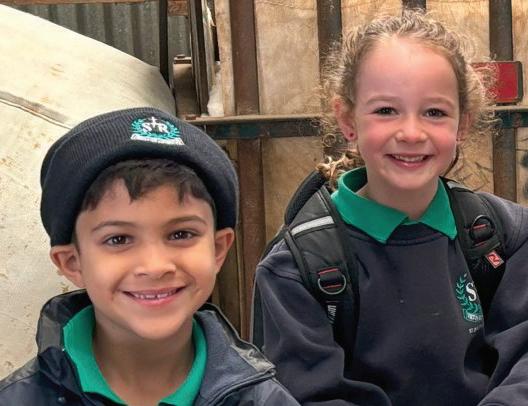















ASTHMA Australia is urging parents to update their child’s Asthma Action Plan.
Just like packing a school hat, this simple step helps ensure your child’s asthma is well-managed and helps teachers, coaches, and caregivers know exactly what to do if a flare-up occurs.
“Sending your child back to school without an updated written Asthma Action Plan is just like sending them to play in the sun without a hat on,” Asthma Australia CEO Kate Miranda said.
“They are exposed.
“It’s one of those small but important steps to keep them protected—whether it’s from the sun’s rays or unexpected asthma flare-ups.”
Ms Miranda said the asthma burden on kids was significant. Four in 10 miss school each year due to the chronic disease.
Asthma affects about 386,000 children in Australia—about two per classroom.
Given the time children spend at school, managing asthma effectively is critical.

Asthma Action Plans help manage asthma and prevent exacerbations, yet only two thirds of children have one.
“Book an appointment with your child’s doctor to update their Asthma Action Plan today,” she said.
An Asthma Action Plan is a personalised guide created by your doctor to manage your child’s asthma.
It’s like an instruction manual for asthma that outlines how to handle flare-ups, monitor symptoms, and provide appropriate treatment.
Regardless of how mild your child’s asthma might seem, everyone with asthma should have one.
“The goal of the Asthma Action Plan is to prevent and control asthma symptoms,” Ms Miranda said.
“Even if you know what to do when your child’s asthma flares up, it’s invaluable to have clear, written instructions from your doctor, especially in an emergency situation.”
The plan covers four key areas: instructions for everyday asthma
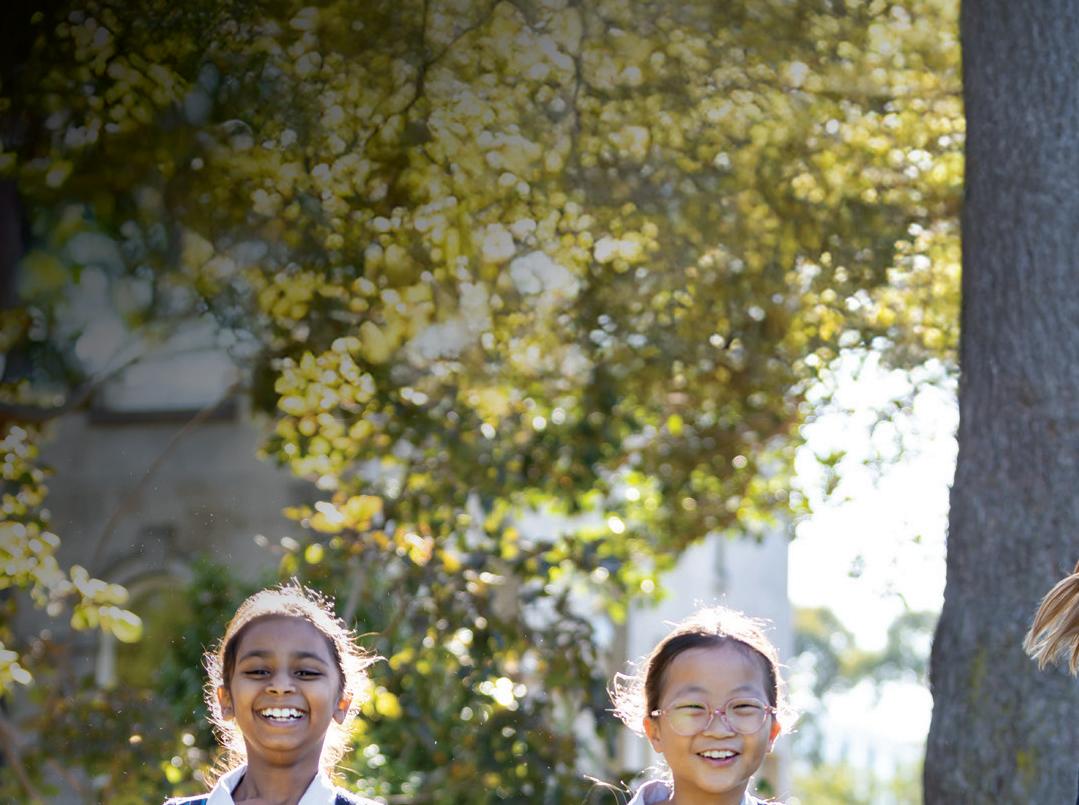

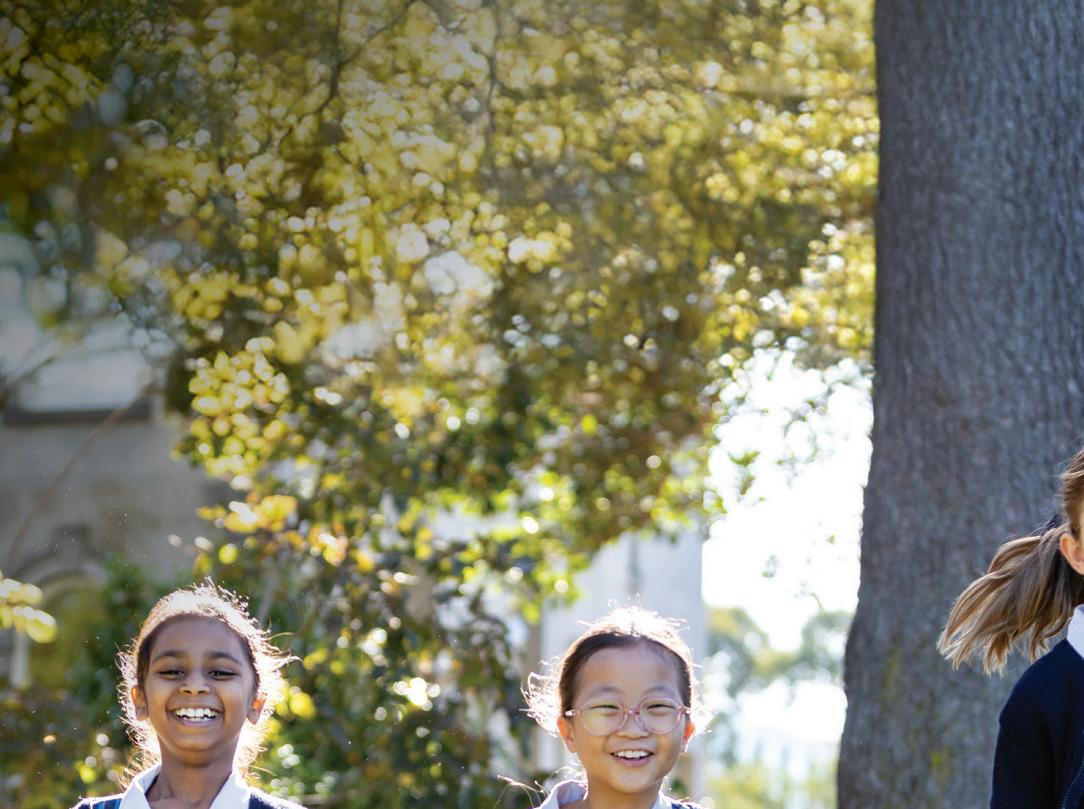



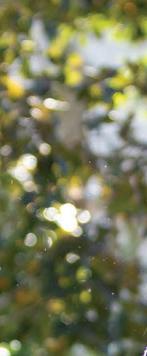

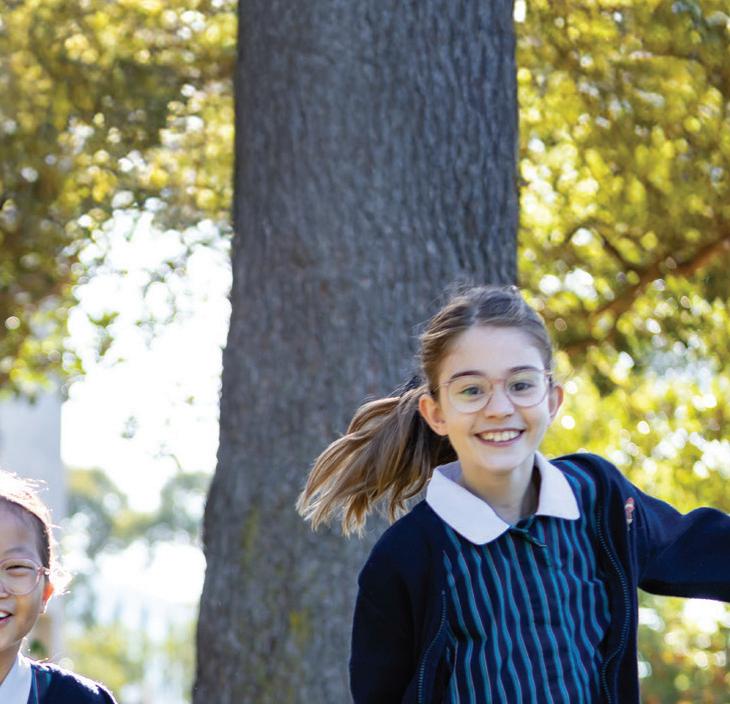


Join us at 172 Burke Road, Glen Iris, for one of our tours.
Hear from our Principal, Adelina Melia-Douvos, staff and students.
Come and explore the School and discover all that Sacré Cœur has to offer.
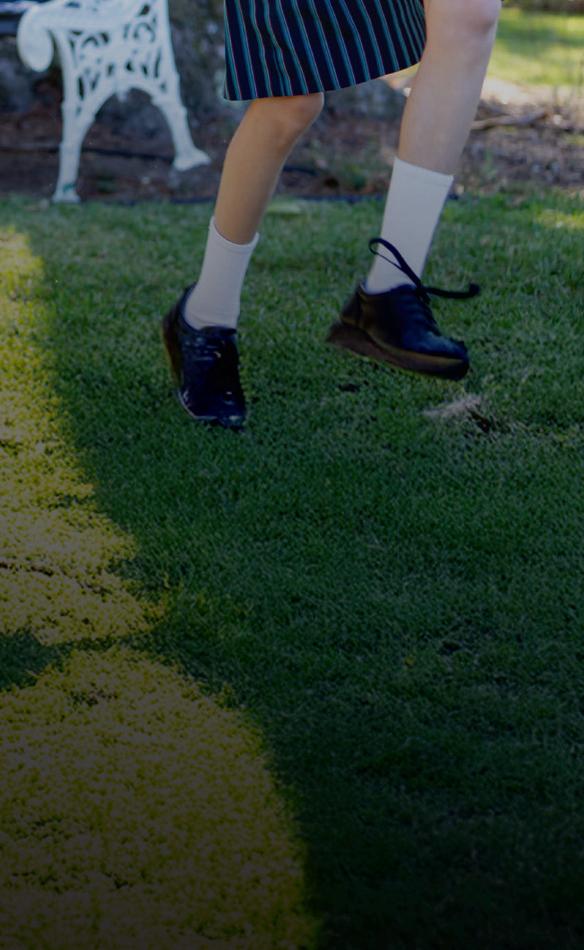


management; steps to take if symptoms worsen; emergency actions if the flare-up becomes serious; and instructions for life-threatening asthma attacks.
Visit asthma.org.au to download an Asthma Action Plan template and access additional resources for managing asthma.
UNDER-18S have lost more than $2 million to scammers since 2020, Scamwatch data shows.
Bendigo Bank has expanded its Banking Safely Online program to secondary schools to help empower young digital citizens.
Specifically tailored to high school students, the face-to-face sessions cover how to identify and avoid scams, spot financial fraud risks, and adopt secure practises for online banking transactions.
“Secondary school students face a flood of would-be scammers, fraud attempts, and other potentially serious challenges online,” customer protection senior manager Aaron Westberry said.
“The Banking Safely Online in Schools sessions are empowering, interactive, and highly relevant for younger people.”
Online shopping and classifieds scams caused the highest financial losses for those aged under 18 last year, with social media, text message, and emails the top contact methods used by scammers, Scamwatch found.
Mr Westberry said it was vital to beware of scammers using increasingly sophisticated tactics.
“It’s important to never let the guard down against scammers, who will be trying their best to catch out
unsuspecting students and their families,” Mr Westberry said.
“Don’t click on links that you aren’t 100 percent sure about, and beware calls and texts from people you don’t know who are requesting information – it could be a remote access scam.”
Stopping scammers in their tracks
Is the website real, or is the caller or texter really who they say they are?
Don’t skip the ‘enable multi-factor authentication’ step - your best defence against increasingly sophisticated scammers.
Beware remote access scams, which often target young people. Never provide personal or log-in information via phone or text to unsolicited contacts.
Be very suspicious. Don’t click on any links in emails or texts that you are unsure about.
If it seems too good to be true, it probably is!
Time is of the essence. Report any suspicious activity to your bank immediately.
Teachers, administrators, parents, and students are encouraged to enquire with their local Bendigo Bank branch to book a Banking Safely Online session for their secondary students.
Andale School Q and A with principal Anna Urban
Question: What is the science of learning and how do you apply its principles in Andale School classrooms?
Answer: In all schools, and across all subjects and year levels, students learn facts, skills, and concepts.
FACTUAL knowledge includes, for example, learning the times tables or key dates in history. Skills, or procedural knowledge, might include learning to play netball or paint using watercolour.
Students then apply what they know and can do within conceptual learning; that is, understanding principles and ideas. In this learning zone, students create, analyse, synthesise, or engage in other kinds of higher-order thinking.
As teachers, we want to nurture students’ curiosity. We want to ensure they develop deep understanding and can connect and apply ideas in the real world. When teachers talk about the science of learning, we refer to the process by which information is laid down in memory.
Understanding how students learn enables teachers to adopt effective teaching approaches. Fundamentally, the learning process happens in the same way for all humans; the difference is that we might at times need individualised ‘inputs’ to maximise learning.
Differentiation is the word we use in schools to describe the way we modify or adjust inputs (such as the curriculum, time, adult support) to reduce the impact of barriers to learning on student engagement and achievement.
The information processing model is a science of learning model that asserts that learning occurs through the following process.
First, we gather information through sensory input; that is, information enters our brain through what we see, hear, touch, taste, and feel. What we ‘attend’ to will differ according to what is happening around us. Sensory input is then transferred into our short-term (working) memory. There is debate about how much information our short-term memory can process and for how long; the term ‘cognitive load’ is used to describe these factors.
On average, short-term memory can process small chunks of information for about 20 seconds. We can use mnemonic strategies to enhance the capacity of our working memory.
The process of remembering (longterm memory) involves multiple exposures to information, actively using new information, and repeatedly recalling information through practice.
The more frequently we use information and retrieve it, the more concretely it is laid down in our longterm memory.
This is a highly compressed summary of how learning works. There is a very useful resource called ‘The Science of Learning’ where you can find more detailed information.
At Andale School, teachers design programs that foster student engagement because we know that gaining and maintaining student attention is the critical first step in learning.
Our teachers use assessment data to ensure that we understand what the next steps of learning should be for each student.
As our students have complex learning needs, we ensure that our programs are appropriately paced.
Teachers engage in spaced repetition to strengthen memory and build a solid knowledge base. Our teachers provide a safe environment and reduce, as much as possible, the stressors that affect students’ ability to concentrate and attend to learning. This includes reducing the extraneous cognitive load by providing orderly classrooms in which distractions and interruptions to learning are minimised.
When children feel safe at school, they are able to fully engage in the learning programs; when they engage in learning, achievement follows.
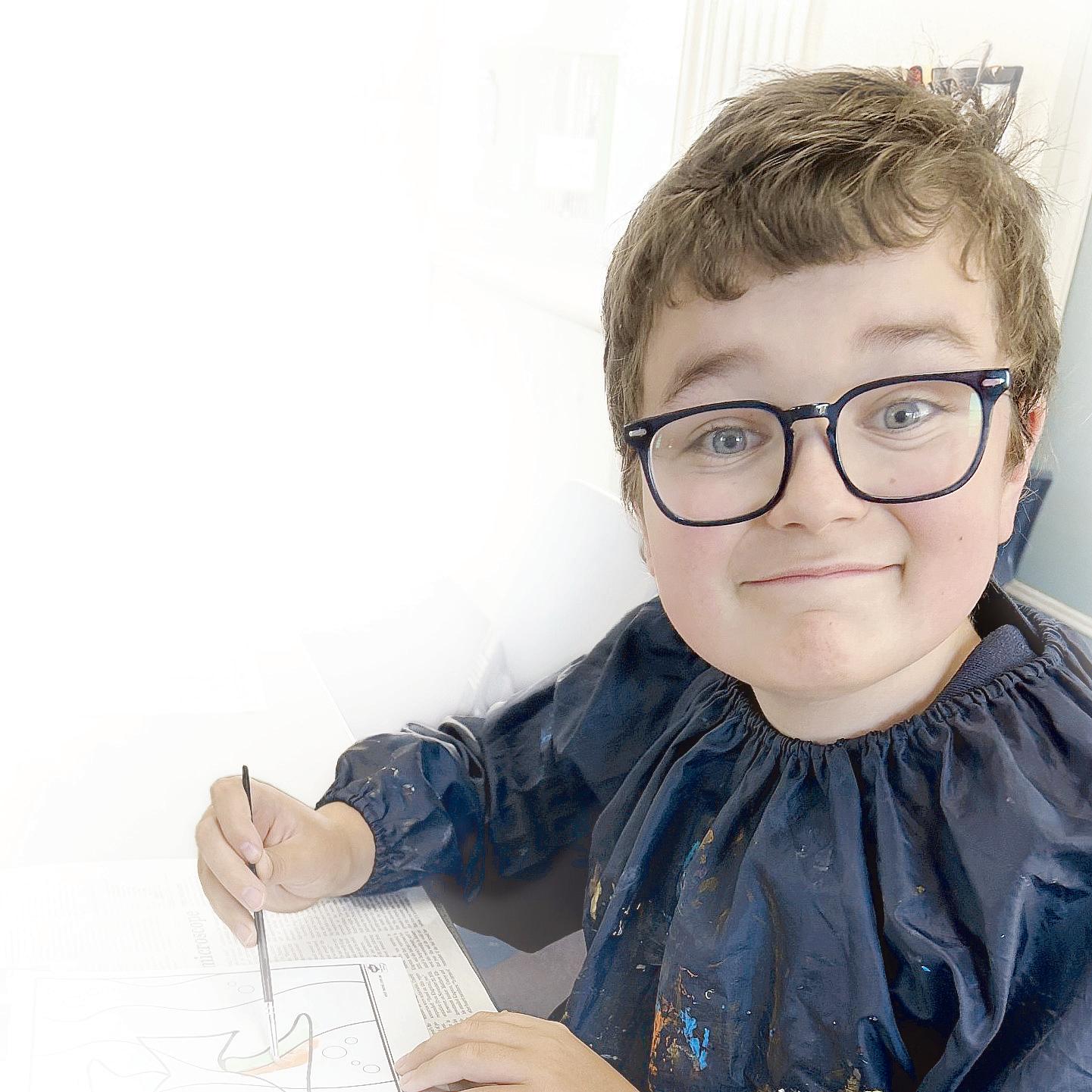

STUDENTS in Years 5 to 10 will learn more about pelvic pain and menstrual health at school from this year.
Sexual Health Victoria will deliver the inclusive, age-appropriate, evidencebased, and curriculum-aligned education program in-person to build menstrual health awareness among young people.
It will reach 400 government schools by 2027.
Health Minister Mary-Anne Thomas said the program would help to “destigmatise and remove the shame women and girls have long been taught to feel about their bodies”.
An Australian study found 21 percent of young people aged between 15 and 19 experienced severe pelvic pain during their periods.
The education sessions will help students develop the skills and confidence to recognise when and how to seek help and support.
The sessions will also cover endometriosis and other conditions that can cause pelvic pain – many of which are only diagnosed after significant delays.
“We are ensuring more young Victorians are informed so they can seek help before their pain impacts their health and not have to suffer in silence,”
Education Minister Ben Carroll said.
The program also includes resources and development sessions for school staff, to build knowledge and confidence to support students with pelvic pain, including referring to support services.
These sessions will also increase staff capability to deliver menstrual health education to students.

I love coming to Wesley every day.

From foundations in literacy and numeracy to art, music and dance, Wesley’s early education nurtures curiosity through hands-on exploration and play. Small class sizes ensure tailored learning, building confidence and a sense of belonging.

Early learners are guaranteed a place in Wesley’s Prep. Book a tour to explore the exceptional care and learning for 3and 4-year-olds at our Elsternwick, Glen Waverley and St Kilda Road campuses.





DOLLY’S Dream is asking parents and children to think about being kind.
The national anti-bullying organisation is dedicated to changing the culture of bullying by providing support, programs, and resources for families, schools, and communities.
Clinical psychologist Dr Charlotte Keating, a Dolly’s Dream advisory board member, said a recent report found one in six students had been made fun of by peers.
“It’s critical to have conversations with children and young people about what bullying is, and the steps they can take to get help,” Dr Keating said.
Bullying is behaviour which causes harm and is done deliberately and repeatedly.
Bullying can be:
■ physical - hitting, shoving, tripping, or kicking;
■ verbal - insults, threats, or nasty teasing;
■ social - spreading ugly rumours or telling people not to be friends with someone; or
■ cyber - spreading nasty gossip about someone online or posting embarrassing pictures without their permission.
BRIGHT Little Sparks, Hawthorn’s newest playful learning studio, opened its doors in August and the response from families has been overwhelming.
It seems lots of locals are looking for a place to play, learn, and connect.
The beautifully designed space spans a range of playrooms that cater to children’s different interests and developmental stages, from an interactive STEM room to a light-filled art studio and imaginative play zones.
Whether you have a baby, toddler, preschooler (or one of each!) there is something to keep all ages engaged.
The philosophy behind BLS is simple: come and play with your child, and make a mess and memories together.


Every week the clever team transforms the BLS studio based on a fun-filled theme (eg. construction, magic, autumn) and carefully curated activities are designed to spark joy, curiosity, connection, and development.
Children aged 1 to 5 years can join a guided All Sparks messy play session or enjoy free play in our Open Studio sessions.
As Melbourne moves into the cooler months, BLS might just be the perfect place to play.
On a cold and rainy day, beat the cabin fever and leave the play and learning inspiration to BLS. There is always something to take away from the studio: playful mindset, renewed connection between parent and child, or a new activity to try at home!
And the fun no longer stops at preschool!
Kids’ Yoga and Creative Arts sessions for primary school-aged children are now on offer, run by expert teachers.
Fast becoming a place for the littlest and biggest sparks to play and learn, stay tuned for BLS’s exciting and ever-growing plans.
Anything this team has to offer is sure to be BRIGHT!
Casual bookings, multi-pack passes and vouchers are available via www.brightlittlesparks.com.au.
Email hello@brightlittlesparks.com.au for term enrolments.
If your child says they’re being bullied, it’s important to stay calm and let them know they’ve done the right thing by telling you.
Ask them for the full story and explain that bullying is never okay and that it’s normal to feel upset.
If the bullying is taking place at school, reach out to meet and discuss the situation.
If the bullying is happening online, capture screenshots of abusive messages, comments, or posts, and save any relevant emails or direct messages. Make a note of the dates, times, and details.

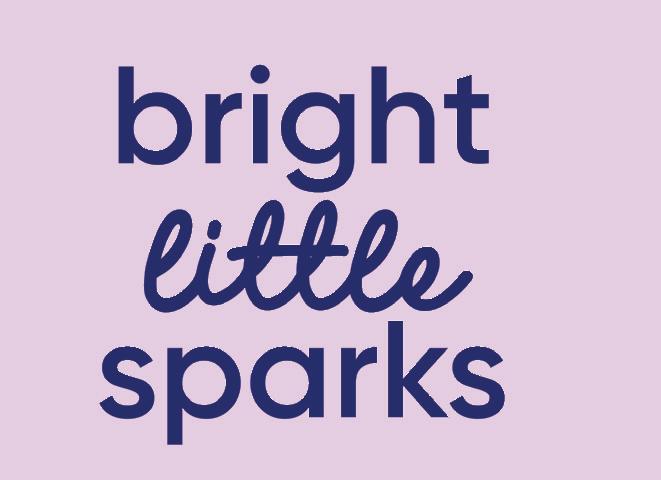

Report to the social media platform and file a report to Australia’s independent regulator for online safety, the Australian eSafety Commissioner, at esafety.gov.au.
Dolly’s Dream recommends parents teach their kids to recognise when they need support and help them make a list of trusted adults they could talk to.
Speak to qualified counsellors via the free Dolly’s Dream Support Line 24 hours via 0488 881 033 or dollysdream.org.au.

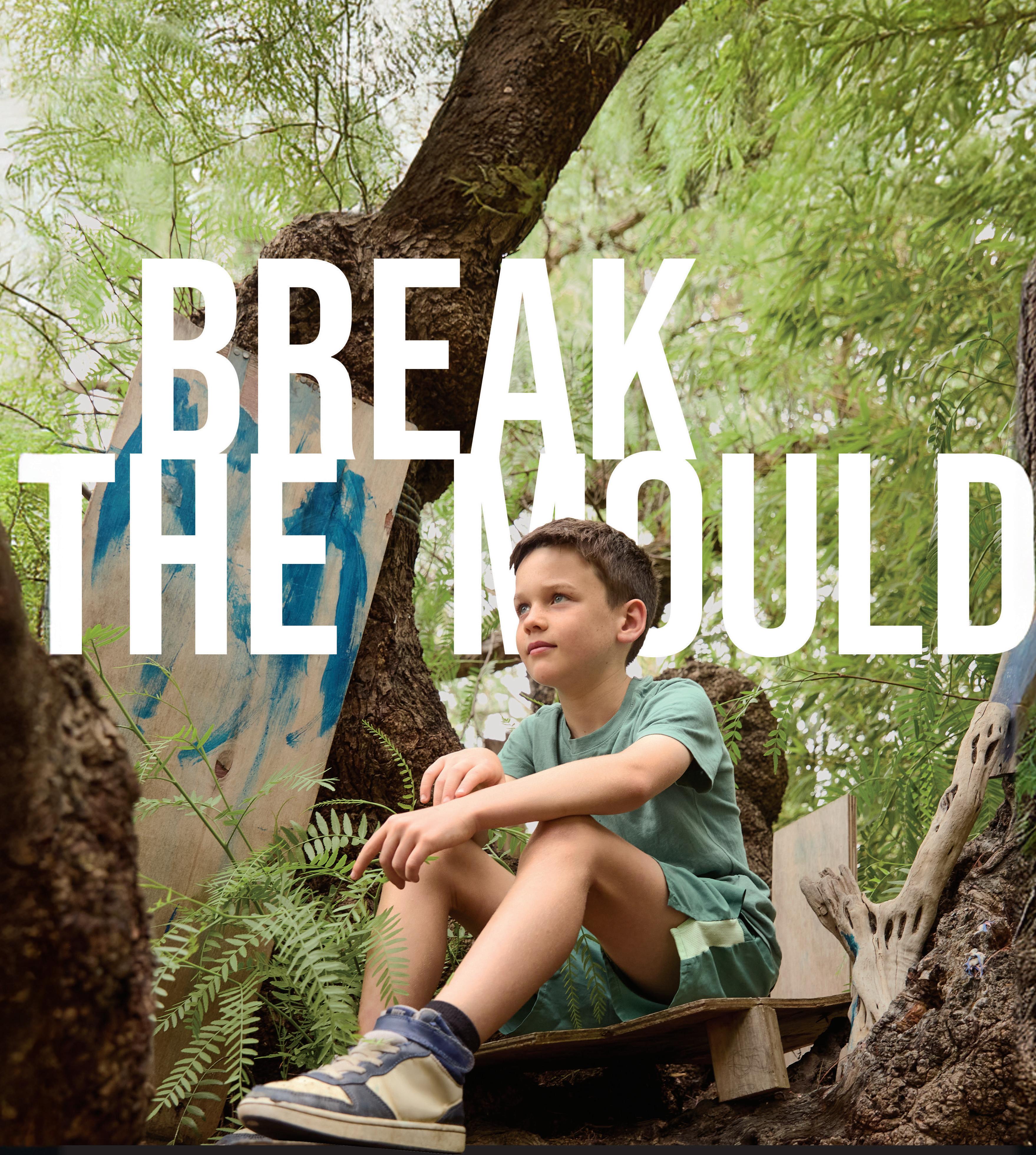
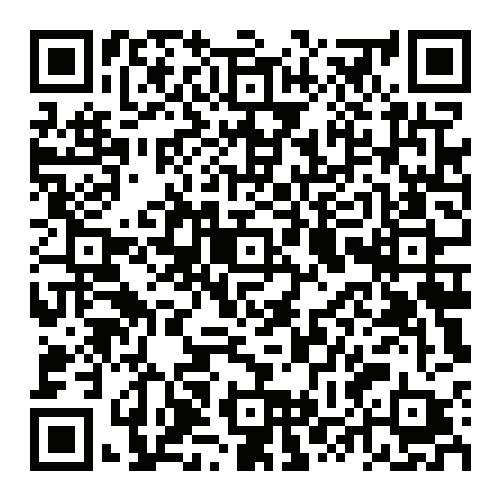


DANCE Factory has a five-studio complex in a central Richmond location, exceptional teaching staff, and a proven history.
Since 1985, Dance Factory has developed a reputation for training some of Australia’s finest dancers, performers, and choreographers.
Dance Factory is the perfect school to develop the love of dance, movement, and performing that toddlers, juniors, and teenagers have.
Just for fun, or for those taking their

NOW RECRUITING NEWPLAYERS OF ALL EXPERIENCE
Boys and Girls U8's -U18's
Teams: District to Pennant &Shield
Coaches: Josh Bretherton
JuniorDevelopment Coach withexperienced coaches amongstage groups
Locations: Elwood & South Yarra
Enquiries: juniors@mcchockey.org.au

first steps on the path to being a dancer, there is only one place to dance: Dance Factory.
Its classes cover a variety of dance styles: hip hop, jazz, acro, cheer, ballet, tap, musical theatre, and more.
At Dance Factory, juniors perform on stage in both mid and end-of-year concerts and teenagers perform at the end of every term.
Dance Factory is at 225-227 Swan Street, Richmond. Contact dancefac@ netspace.net.au or 9429 9492.
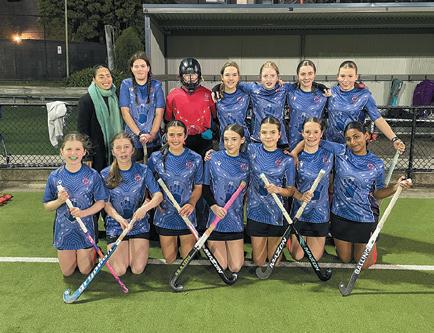

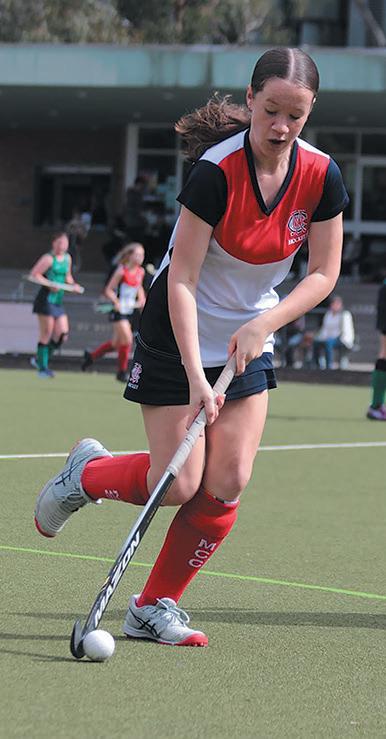
With over 35 years experience in the industry, our junior classes are fun, creative, engaging and are taught by dance professionals
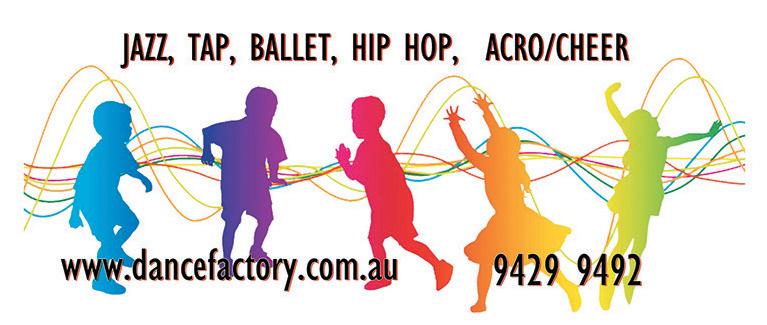
ARE your kids hockey players or would they love to play?
MCC Junior Hockey has spots available at each age group and all levels.
For 2025, coaches will be strategically placed in age groups to cater to varying abilities and will have the skills and experience to support not only your child to grow but also the teams.
Josh Bretherton is the club’s junior development coach.
Josh is a long-standing competitive player and coach with MCC, a current Premier League player (2023 premiership team) and a current HV state junior coach.
Josh has also been a part of the Hockey Club (HC) Melbourne squad, the Junior World Cup Squad, and the VIS.
The coaching team includes:
■ Adi Glancy - Level 2HA coach and former Premier League women’s coach.
■ Jonno Bretherton - Current Premier
League player and HC Melbourne squad member.
■ Rachael McLeary - Level 2HA coach, premiership-winning player and coach.
Stay tuned for further coaching announcements!
Teams range from under-8s through to under-18s with district, pennant and shield teams to cater for growth and progression of the club’s players.
Academy is underway on Tuesday nights at Elwood.
Visit www.mcchockey.org.au/ juniors/2025-term-1-hockey-academy for more information.
Preseason will follow on from Academy training.
Visit www.mcchockey.org.au/juniors/ jnr-programs-teams-training for training and game information.
For more information, email juniors@ mcchockey.org.au.



ARE you planning your child’s birthday party but dreading a pile of unappreciated toys?
You might want to consider throwing a ‘fiver party’.
What’s the concept? Well, each guest inserts a $5 note in a card for the birthday boy or girl.
Simple, right?
It’s brilliant because it cuts down the number of unwanted toys while also taking the pressure off parents when it comes to buying gifts.
Mums and dads don’t need to spend a small fortune or struggle to come up with a gift idea, while the birthday child gets to put some money towards something they really want.
But asking for money can be awkward, you say?
Well, yes, but it’s only $5 and you can word the request politely on the party invitation.
Try something like, “Mia is celebrating her 10th birthday with a fiver party. Mia has her heart set on (insert expensive toy here) so if you’d like to buy her a gift, please instead place a $5 note in a birthday card. Thank you.”
However, before deciding to host a fiver party, you need to consider whether your child will appreciate the concept. How old are they? Are they used to opening up a huge pile of gifts on their birthday? Do they have an understanding of money?
A fiver party might not be the best idea for a wrapping paper-obsessed four-year-old. However, a 10-year-old saving for that special something is likely to give you a high five!



FIZZ Kidz is known for redefining the party experience with engaging, hands-on and incredibly fun parties.
Fizz Kidz offers science parties, glamour parties, slime parties, tie-dye parties, and an exclusive Taylor Swift-themed party package.
There are four Fizz Kidz studios across Melbourne, located in Balwyn, Malvern, Cheltenham, and Essendon.
Party packages are all-inclusive, consisting of kids’ creation-making,
dancing games, exclusive studio use, fantastic party hosts, party food, and invitations.
It’s your easy one-stop shop that kids love!
Devoted to personalised touches, Fizz Kidz prides itself on being your trusted partner in kids’ entertainment. To book an amazing party or explore more about their offerings, visit fizzkidz.com.au or call 9059 8144.
Let the celebration begin!

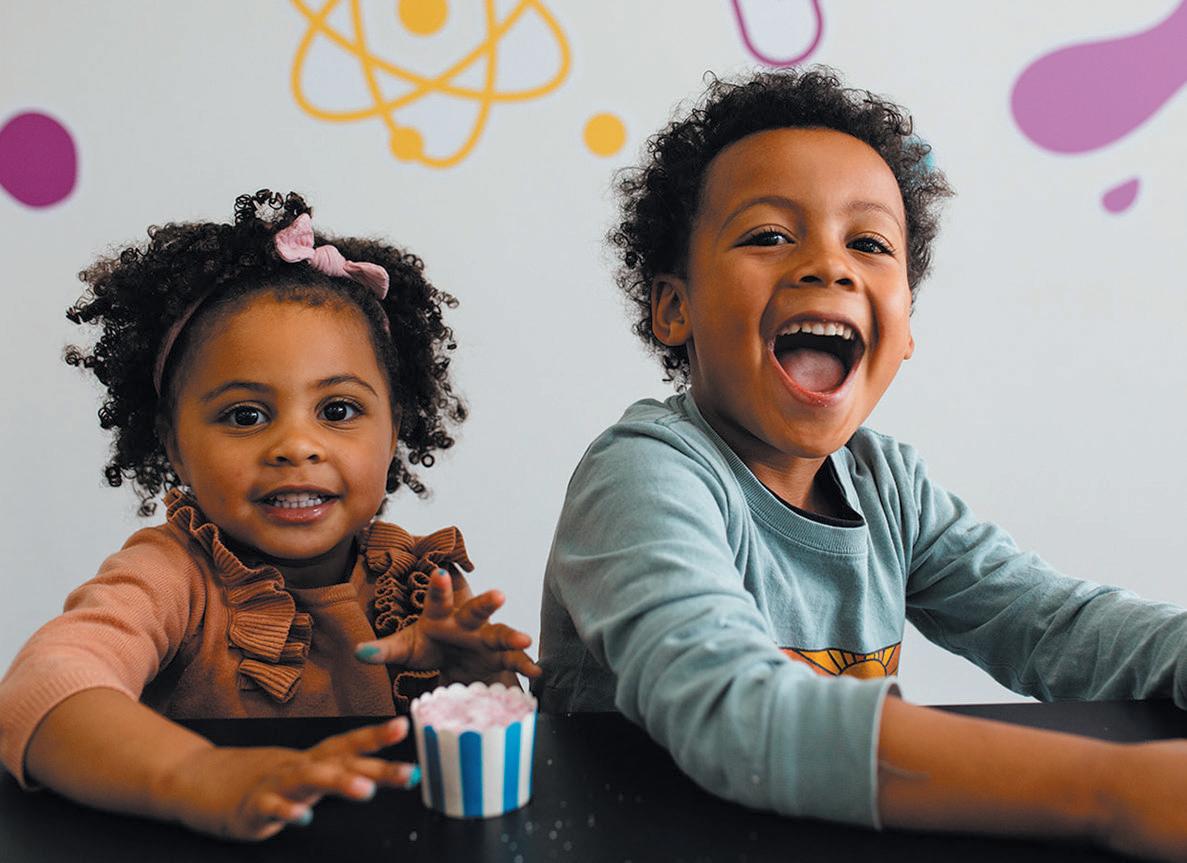


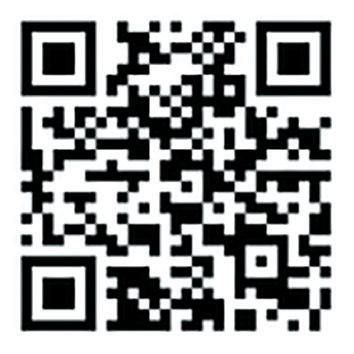
Classic party games have stood the test of time for a reason.
They might slip your mind as you strive for the ultimate celebration for your little one, but going back to basics might be just what you need to put a smile on your child’s face - while cutting costs and reducing your workload.
Here are a few suggestions for your next party.
Pass the parcel
Kids of all ages get excited about this classic game.
Buy a main prize, a few inexpensive toys, and a pack of chocolate bars.
Using a newspaper, wrap the main prize, then wrap the parcel another dozen or so times, placing a toy or chocolate bar between each wrapping.
Or you can skip the mini gifts and have the kids coveting that final present - known to Bluey viewers as playing by ‘Lucky’s Dad’s Rules’.
Whichever method you choose, to play, the kids sit in a circle and you play some music.
When the music stops, the child holding the parcel gets to unwrap it and reveal their prize - or take the parcel one step closer to that big win.
Musical chairs
Set up chairs in a circle, starting with one chair less than the number of kids playing.
When the music stops, the kids scramble for a seat and the child left standing is out.
Try to keep the vibes positive to avoid teary departures from the game.
Take another chair away and repeat until there is only one child left standing!
Make sure you have a prize on hand for the winner.
Pin the tail on the donkey
YOU can buy kits for this game, or you can use a poster of an animal, a pack of stickers, and a blindfold.
To play, each child is blindfolded and spun around before being directed to the donkey (or other animal) with a tail in their hand.
The child who sticks the tail closest to the spot where the tail should be wins!
Treasure hunt
Kids love hunting for treasure!
You could buy some inexpensive prizes or confectionary and hide them around your yard, or you could hide tokens so that the child who collects the most can exchange them for one main prize.
The scavenger hunt is a variation on this game, where children hunt for a set of clues to reveal an answer.
SLUMBER Tribe offers a one-of-a-kind slumber party experience, creating memories that will last a lifetime.
Friendship is a crucial part of a child’s social and emotional development. By nurturing these relationships during the holidays, we ensure that children return to school with a strong sense of belonging and camaraderie.
These events are particularly popular with children in Years 5 to 7 and not only enhance existing friendships but enable children to form new connections and grow emotionally, laying the groundwork for meaningful relationships throughout their lives.
Wildest Dreams is Slumber Tribe’s newest theme in 2025, with a DIY set-up option.
Fancy a DIY setup that’s fool-proof and easy to manage in your own time?
Wildest Dreams is a little more


flexible in placement arrangement, with more visible space as it only covers half the mattress area.
You can also open it up to its full size for those who want a little more privacy for sleep.
This works especially well with the much younger cohort, so they can really settle into their own magical space with enough room for their tray table and lantern to sit inside with them.
The DIY package starts at $300 for three kits. If you’re after two, contact founder and director Fiona Millar to discuss a special price.
For older kids and tall kids, bigger beds are here!
These beds are perfect for boys from 11 years old, who can certainly have a big growth spurt around then, and girls aged 14 and above who want the pretty sleepover without the teepee and canopy.
“We have many variations of colours tailored to suit your sleepover needs,” Fiona said.
Pricing starts at $30 DIY and $40 setup as below:
∞Big Luxe package - Single airbed 190x99cms, pump, fitted mattress protector and sheet, mustard coverlet, rose blanket, floral bolster cushion, lantern, and eye mask gift.
∞Big Boys package - Single airbed 190x99cms, pump, fitted mattress protector and sheet, royal blue or black blanket, galaxy projector, and satin eye mask gift.
Email info@slumbertribe.com.au or call 0491 916 533 for bookings or more information. formation.

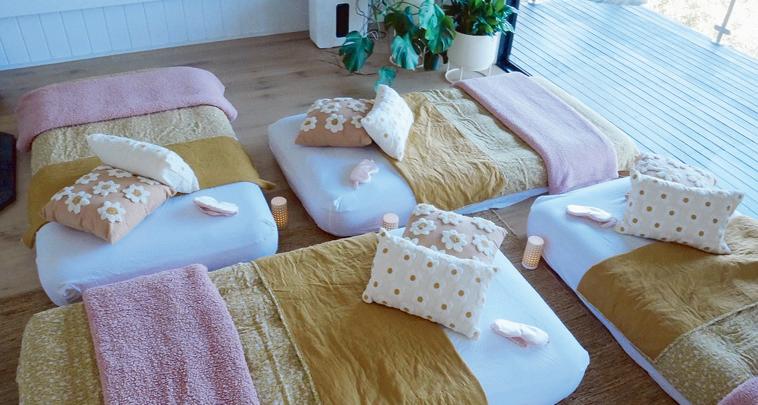

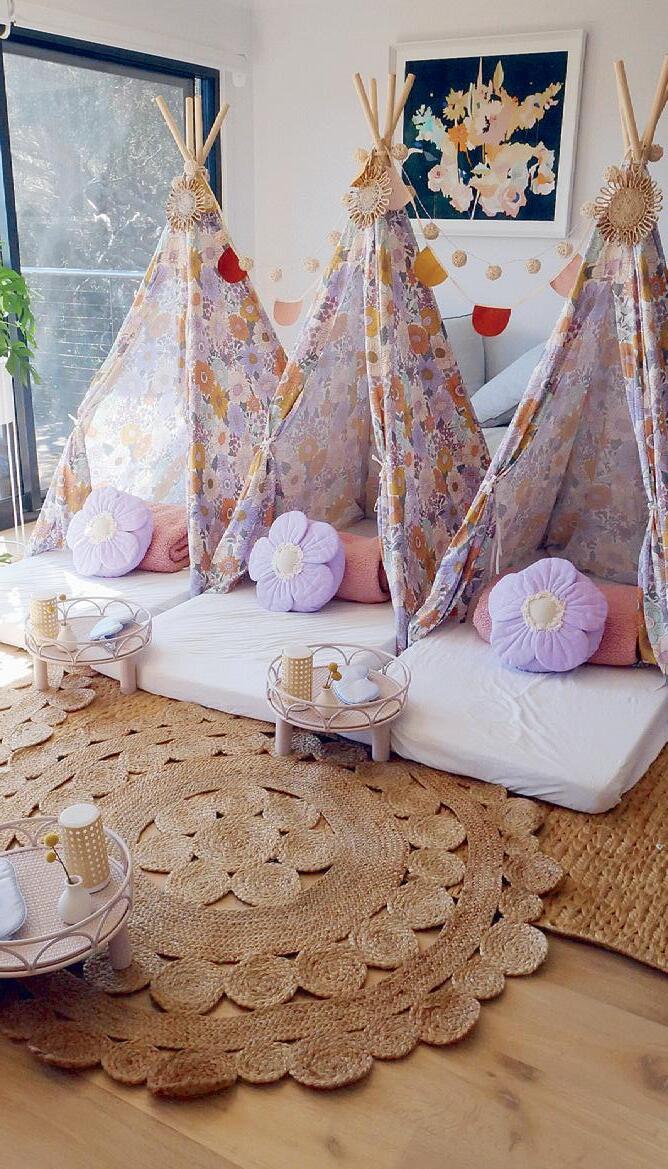






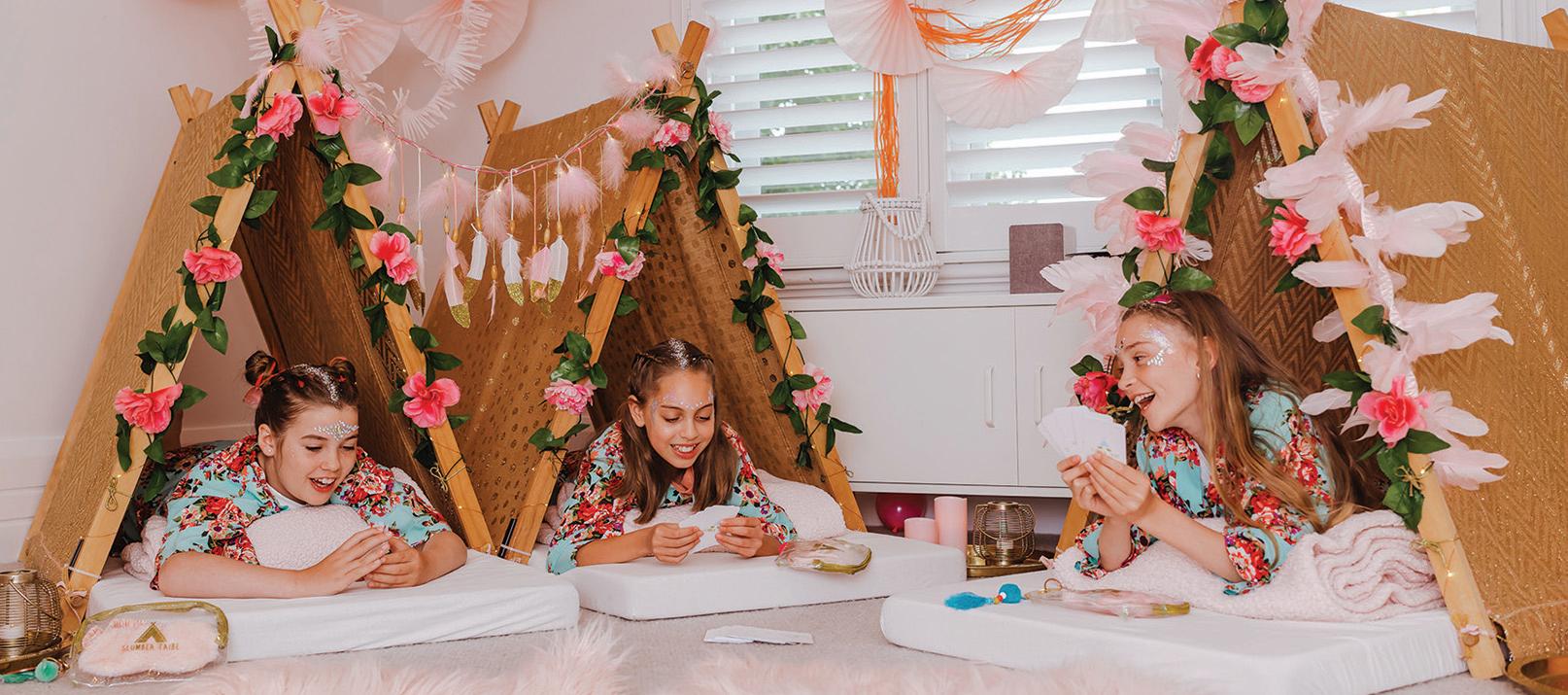





By Casey Neill
RACHEL Boyle knows the value of genetic testing all too well.
The Woori Yallock mum’s heartbreaking loss of two babies could have been avoided had she and husband Blake discovered the perfect storm lurking in their DNA sooner.
“I just want people to not have to go through what I’ve gone through,” she said.
“If you spend $800 or $1000 on extensive genetic testing, it’s worth not losing a child’s life.
“If nothing comes up you’ve got peace of mind.
“Everyone thinks it won’t happen to them.”
Rachel and Blake decided to try for a baby shortly after their wedding.
“We got pregnant after a few months and had our son Kai,” she said.
They wanted two children close in age, so tried for another baby when Kai was nine months old.
“We very luckily fell pregnant first go,” she said.
“But there were complications at 20 weeks.
“Our second son, Caden, was born at 24 weeks.
“It was a complicated birth that nearly ended my life, to the point where they had to choose to save me or the baby.
“He was born alive, magically, at only 424 grams.
“He was taken to the NICU where we thought we were just going to have a long road letting him grow.
“After six days he was too sick, he had a brain bleed and we had to make the decision to take him off life support.”
Rachel and Blake asked questions about what had happened and tests they could take.
Their medical team told them they were ‘just unlucky’ and ‘these things happen’.
“They said we were safe to try again for another baby,” Rachel said.
She waited for her body to recover then again fell pregnant.
“Everything was fine up to 20 weeks when I was hit with the same complications,” she said.
“The baby wasn’t growing properly.”
Rachel developed preeclampsia, which affected the baby’s growth even further.

“I was admitted to hospital for two months because my body was shutting down,” she said.
Covid had Melbourne locked down so toddler Kai couldn’t visit his mum.
“That’s not normal for a child to be kept away for months on end,” Rachel said.
She had scans, medications, and tests every day.
“It got to a point where she wasn’t growing properly so we had to do a c-section to give her the best chance to survive,” she said.
Ava was delivered at 27 weeks but weighed only 500g.
“She cried when she came out. That gave us a lot more hope,” Rachel said.
Doctors started to believe something genetic was at play.
“After nine days we had to take her off life support,” Rachel said.
“There was nothing more the doctors could do.
“Our amazing fetal medicine specialist…she wanted to push for genetic testing but it was expensive and not guaranteed to find anything.
“They’d never seen what had happened to Caden and Ava.”
So a rare genetic study examined DNA from Rachel, Blake, Caden, and Ava “to look for whatever they could find”.
“It was an excruciating wait,” Rachel said.
“I didn’t know if I’d ever be able to have another baby.
“About 10 months later they got the first round of genetic results.”
Rachel and Blake both carried a rare gene, LARS1, which causes infantile liver failure syndrome. Only 25 cases had been recorded worldwide.
It affects every organ in the body and is not normally compatible with life.
“It was amazing to have an answer as to why they were sick and why Kai was OK,” Rachel said.
“He had skipped the gene.
“It was also a relief to know that choosing to take them off life support was the right decision.
“Once we were given an answer as to why it happened, we were provided with some possible ways to have another baby in the future if we wanted to.
“We could try naturally and at 16 weeks have to do some intensive testing. If the baby carried the disorder we would have to terminate.
“The other option was doing IVF and picking an embyro that was not affected.”
They took the IVF route.
“We didn’t want to have to make the decision to terminate,” she said.
“We didn’t want to give up on our dream of having two living children so we decided to try even though we were terrified.”
They created four healthy embryos and transferred one successfully.
“Then we began the very difficult pregnancy, waiting to see if we would lose another baby to another problem,” Rachel said.
“Even though it was a tested embryo, there was still a small chance she’d be affected - it’s not 100 percent.
“We had to wait for 16 weeks to do an amniocentesis - which is risky, it can cause miscarriage - and hope that the embryo testing was good enough.”
Throughout her pregnancy, Rachel had weekly scans and wellbeing checks plus monthly psychological checks.
“It was probably more hard mentally than physically,” she said.
“With Caden and Ava, it was taking every ounce of my energy to keep them alive.”
She couldn’t speak highly enough of the support she received from her medical team.
“They always talked about Caden and Ava,” she said.
“We would laugh about this baby trying to prove to us that it would all be OK because she was so big.”
Rachel was due to have a planned c-section at 36 weeks - the way her c-section to deliver Ava was performed meant a chance of uterine rupture if the pregnancy progressed any further.
“I was trying to count down to the c-section date, getting more and more hope but also terrified that hope would be crushed again,” she said.
Blake dissociated.
“He didn’t have to feel the pregnancy so he was just pretending like I wasn’t pregnant, because it was too hard to think about,” she said.
“He was still supportive, he came to every appointment, but he was detached from any hope that she would make it.
“His biggest worry about trying again was losing me because he’d nearly lost me twice.”
Kai, then 3, was very excited about the prospect of a living sibling.
“At such a young age he had already been through the loss of his brother and his sister,” Rachel said.
“He met them, he knew that they died.
“He would ask, ‘Is this baby going to live, is this baby going to come home?’.
“We had to tell him the truth: ‘We don’t know, we’ll just wait and see’.
“He’s extremely empathetic now because of what he’s been through.
“He’s had to mature a lot quicker than he should have.
“We feel a lot of guilt about that.”
Two days before her c-section date, Rachel started going into labour.
“Our whole medical team was notified and they tried to slow it down, but it wouldn’t slow down,” she said.
So they decided to deliver Grace early.
Right before the surgery, two rainbows appeared in Rachel’s hospital room, on the wall and the bed.
“The doctors just cried,” she said.
“It was like a sign that it was nearly time and she was going to be OK.”
The doctors who’d cared for Rachel,
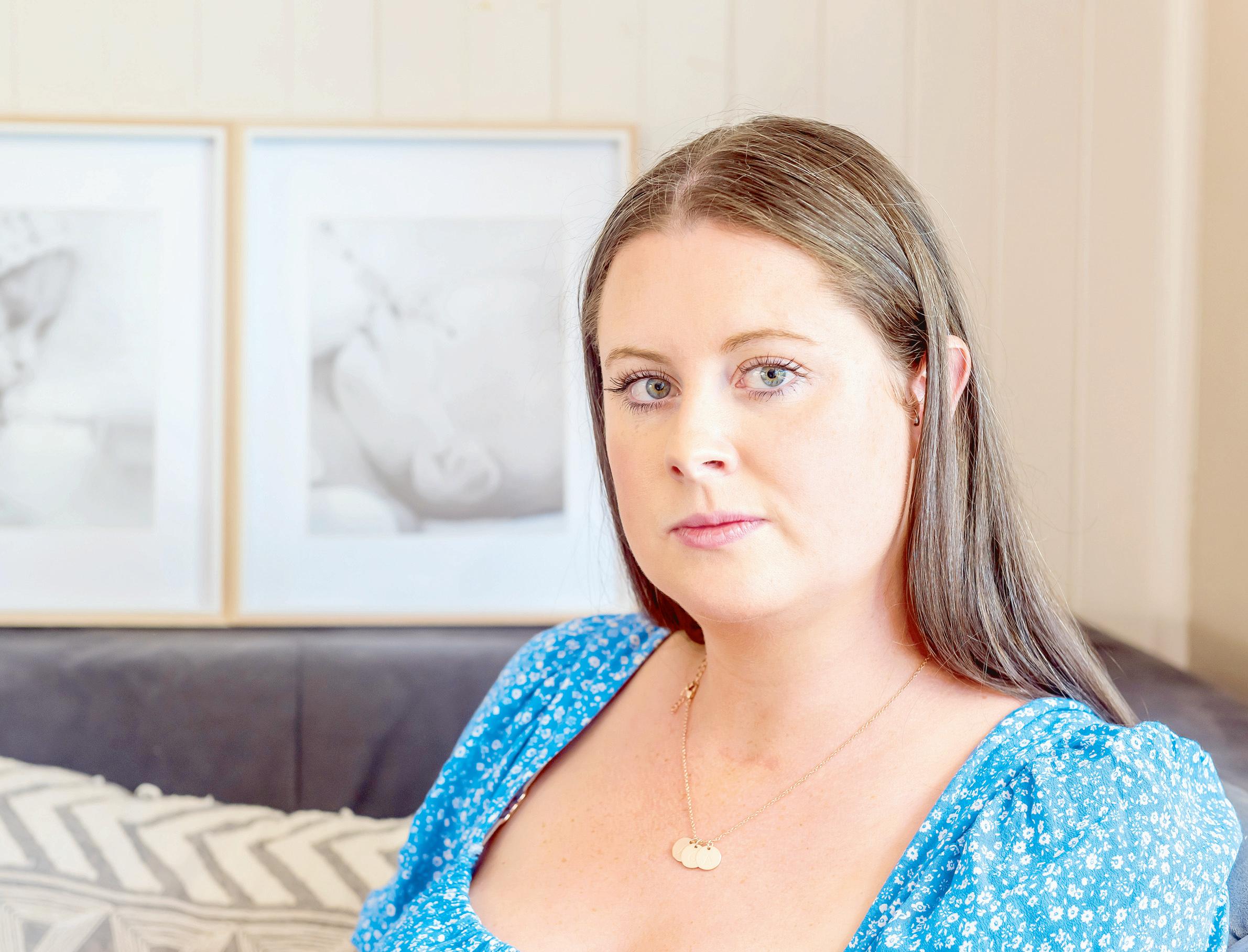
Caden, and Ava were present, and photos of Caden and Ava were in the room.
“When she was born it was like a relief and a release, just that she was alive,” Rachel said.
“They put her on my chest and let me just cuddle her.
“I just couldn’t believe it. It was like a dream.
“She didn’t need any special care time.
“Kai got to come meet her; it was beautiful.”
Then came the time to take Grace home.
“That was hard because we didn’t believe it was going to happen,” Rachel said.
“We’d prepared and bought stuff but we hadn’t let ourselves imagine bringing her home, after trying for nearly four years.
“Then we felt this huge responsibility. She’s here, she’s alive, now we’ve got so much health anxiety and fear of something happening.
“I was tracking every mill of milk and every minute of sleep.
“I was trying to breastfeed and pump and formula feed.
“I thought she was going to die.
“We had to go back to hospital a couple of times.
“What we dreamed of we had had in front of us, but it was so clouded still with trauma and grief and now anxiety.
“She had really bad reflux, she was crying a lot, I was scared of something happening.”
Rachel finally had her happy ending but instead felt a complex mix of emotions.

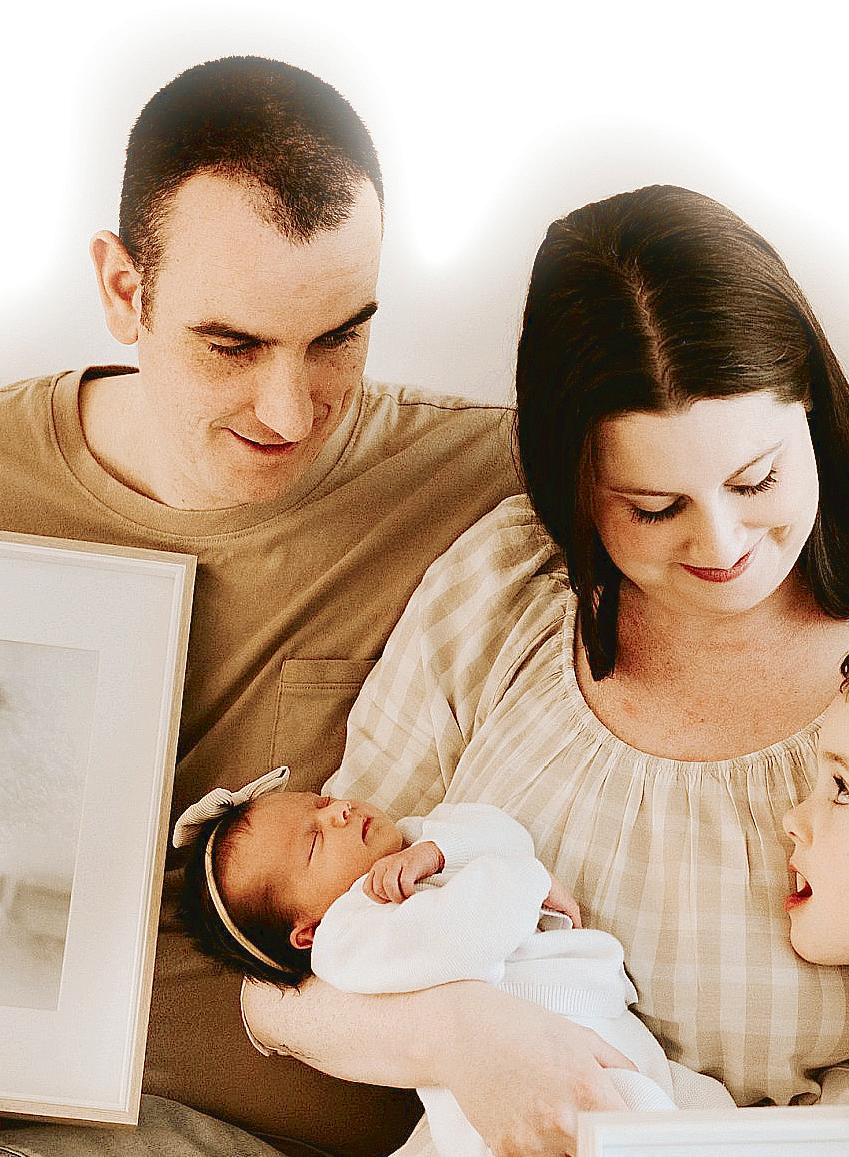


Grace was nearly one when we spoke.
“I’m loving it now. I feel really at ease with her,” she said.
“I’m still just processing that she’s actually here safely.



“But seeing her and Kai play is the thing I dreamed of the most, just having someone for him to play with.
“He’s obsessed with her. She’s obsessed with him.
“That’s all I wanted.”
A CHILDREN’S picture book about a fun uncle is the latest offering from author Chris Thomas.
Designed for children aged two to six, My Uncle is a Funcle is his second children’s book after the success of Leonard The Lonely Duck in 2023.
A ‘funcle’ is ‘a source of unlimited fun, help, advice, and encouragement’ and ‘like a dad but way cooler’.
“The book is very loosely based on myself as an uncle,” Chris said.
“You get to be a kid again by joining your nieces and nephews to play with their toys, build Lego, muck about with games, and be silly.
“Funcles can be a bit mischievous while also introducing kids to your favourite books, movies, and other things, teaching them in a fun way.
“Essentially, you get to enjoy all the great parts of being around kids without the full-time responsibilities that come with being a parent.”
Chris decided to write My Uncle is a Funcle after Leonard The Lonely Duck proved popular enough to gain a second print run.
“I chose to write My Uncle is a Funcle in rhyme, based on a few other popular children’s picture books,” he said.

Beth Reekles
THIS young adult read is a fandom-centric romcom about self-confidence and the power of finding the people who just get you.
When Cerys’ best friend and secret crush Jake moves to a new college, she realises she’s running out of time to take their relationship from platonic to romantic.
She’ll do anything to get out of Jake’s friendzone, even if that means diving into the huge fantasy fandom he loves so much.
But when Jake introduces Cerys to his shiny new friend Max, who goes to all the conventions and loves a costume, she realises she’ll need to do a lot more to grab Jake’s attention than just read a few fanfics.
Can Cerys convince Jake they should become the new couple to ship? Or will he see straight through her cosplay?
Penguin $19.99
Aside from children’s books, Chris has previously written the Who spin-off novel Lethbridge-Stewart: Blue Blood, and short story Vampires of the Night, as well as One Step Forward, Two Steps Back in the collection Doctor Who: Short Trips – Defining Patterns.

He is also the author of comedy novel Journo’s Diary and SMS Mess, and plays.
Illustrations for My Uncle is a Funcle are by Terry Cooper, who brought Leonard The Lonely Duck to life.
“I was extremely happy that my publisher paired me with Terry the first time around because the pictures were even better than I imagined.

hildren’s Chris has a en the offficial Doctor ovel Letthhbriidge-SStewart: t short storry of ell as Onne Forwardd, in the collectiion o Doctoor r s – Deffining Patterns e author of noveel l and SMS Mess, and plays for Unccle is s a Funcle oper, nely Duck to life. e mely y that m my d me with the first s cause the p were n I imagineed. do thhe il i lustrations a I se childrenn’s
“I asked if he could do the illustrations again but using a pencil-shading style I had seen him use in other children’s books.

“He struck magic again and is fantastic at putting in little details and cues that are in the story.”


agic and is ing in little e details and the of is a lable for $20 (plus via cle@gmail.com


Signed copies of My Uncle is a Funcle are available for $20 (plus $4.50 postage) via myuncleisafuncle@gmail.com.


Author Chris Thomas with My Uncle is a Funcle. (Helen O’Brien)

Jim Smith
FROM the best-selling creator of Barry Loser comes Jim Smith’s new full-colour graphic novel series for readers aged sevenplus.
My Big Fat Smelly Poo Diary is packed full of friendship, fun, and toilet jokes galore!
Join best friends Pedro, Olga and Ozzy—known as the Poopies—on a series of fun adventure stories and help them solve unexpected mysteries, like the case of the unflushed poos.
Scholastic UK
$16.99

Christopher Lincoln
MEET siblings, Page and Turner.
The New York Public Library has always been their favourite place, but lately things have become weird…things like a dragon imprint on the ceiling and a giant beanstalk!
It turns out the books are bursting with magic, and suddenly all sorts of villains are escaping from their books and threatening to destroy the whole library. Now it’s up to Page and Turner - as well as a mysterious Night Librarian and a motley crew of escaped storybook characters - to save this beloved library from destruction before it’s too late.
Scholastic Australia
$19.95
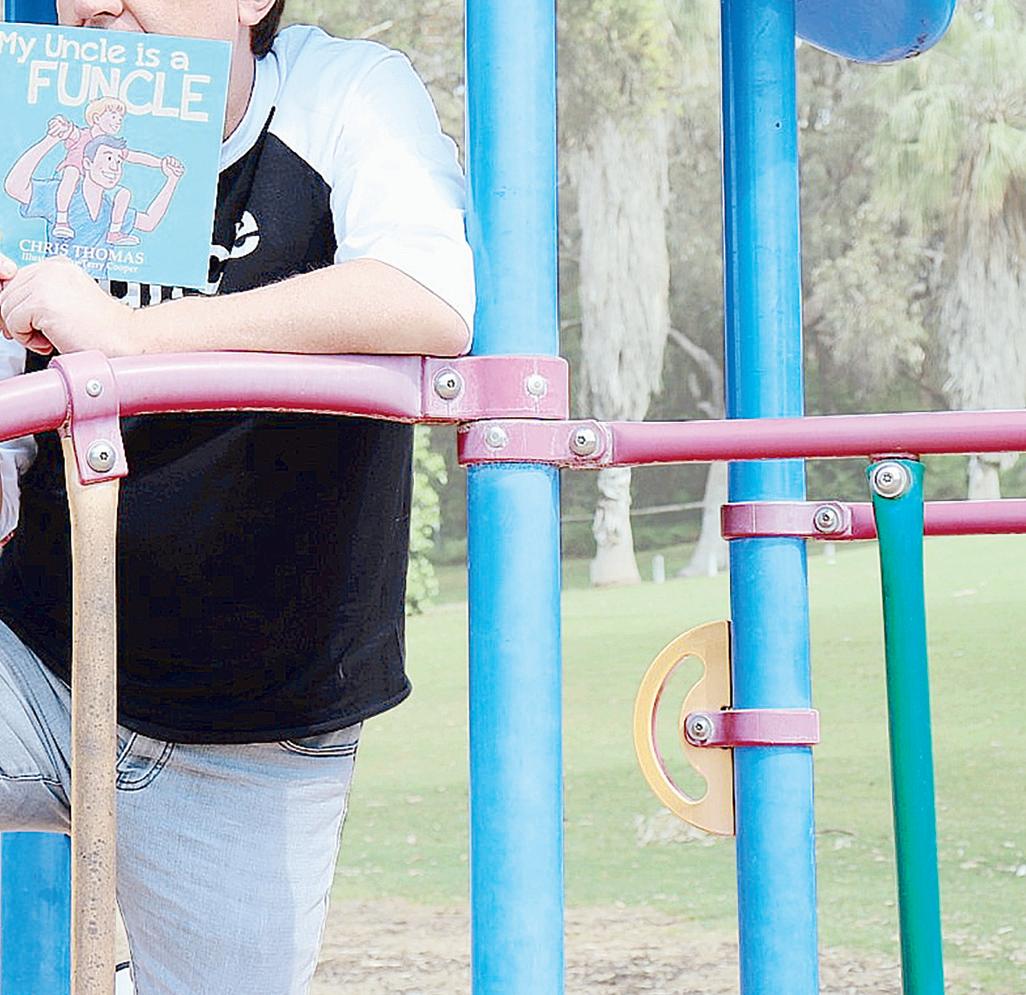

Neil Sharpson
THIS is an absurdly laugh-outloud picture book about the villainy of fish.
Why, dear reader, must you NEVER EVER trust fish?
1. They spend all their time in the water where we can’t see them.
2. Some are as big as a bus— that is not okay.
3. We don’t know what they’re teaching in their ‘schools’.
4. They are likely plotting our doom.
This nature-guide-gonewrong is a hilarious, off-therails exploration of the seemingly innocent animals that live in the water.
Penguin $19.99

Harry and Gran Bake a Cake
Fiona McIntosh and Sara Acton
THIS picture book celebrates family, food, and fun and is perfect for reading aloud to children aged two to fiveespecially with grandparents. Harry and Gran are going to bake a cake. What could possibly go wrong?
A funny and charming story of a gran and her grandchild sharing the joy of baking together and embracing the hilarious mishaps that occur along the way.
It also features a cake recipe from Fiona’s own kitchen.... perfect for a day of family baking!
Puffin $19.99

Handyman














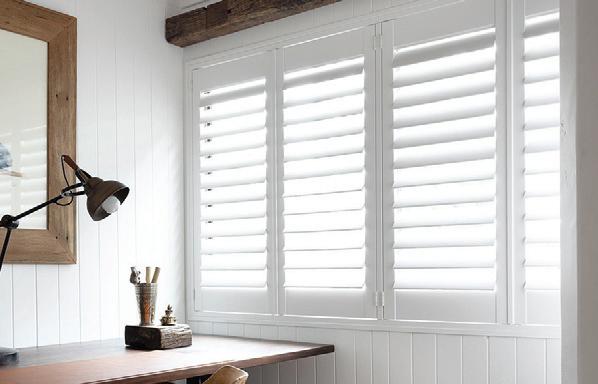


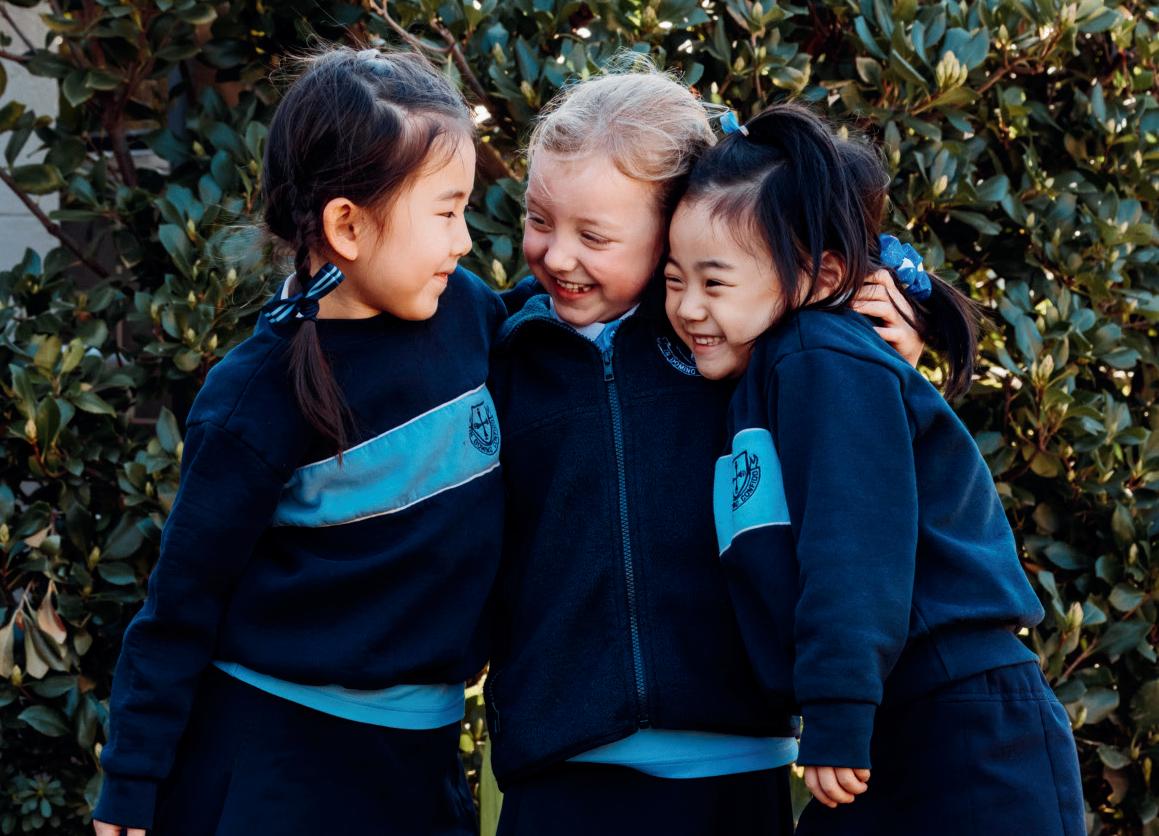
Christ Church Grammar School – Inspiring Young Minds Since 1898 l.
As Victoria’s only Independent Anglican Parish co-educational primary school, we provide exceptional education for children aged 3–12. Ou ensuresevery student receives the support they need to thrive fr
r nurturing environment om ELC to Year 6.
With a tailored curriculum and engaging learning experience curiosity, and a love of learning. Our holistic approach buil students for a seamless transition to secondary schoo
s, we foster confidence, ds essential skills, preparing
Discover a school where your child will grow, learn, and belong.
Book a tour today at Christ Church Grammar School .